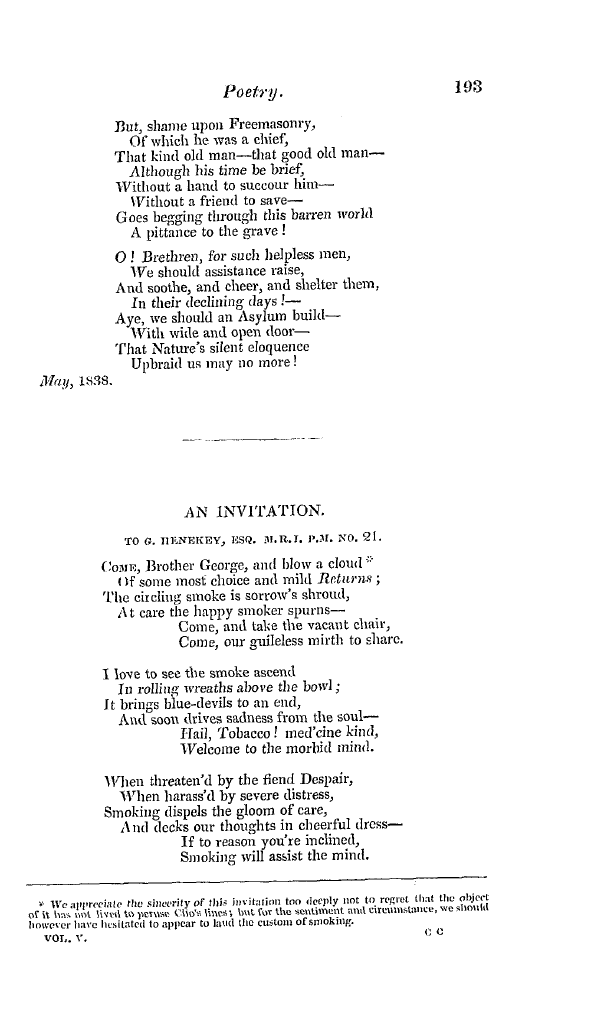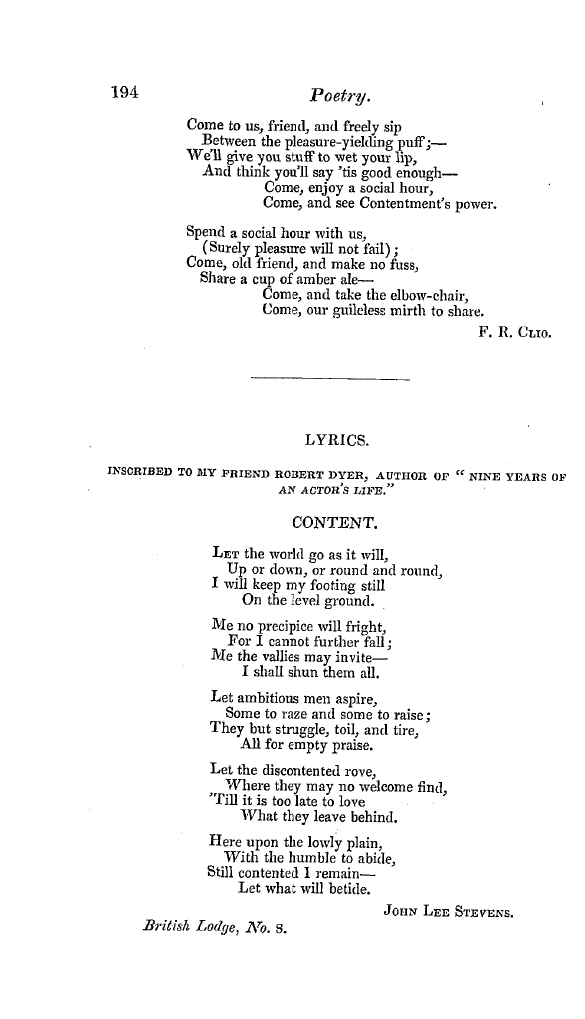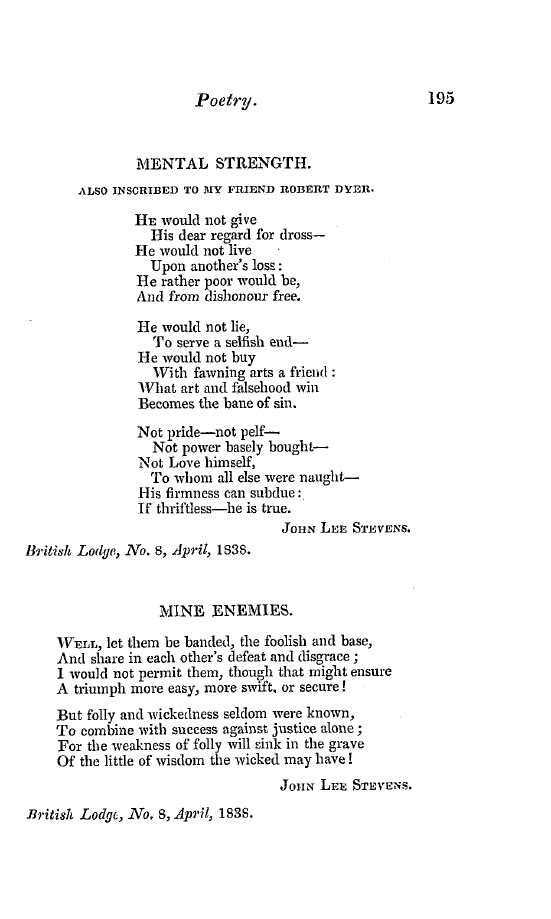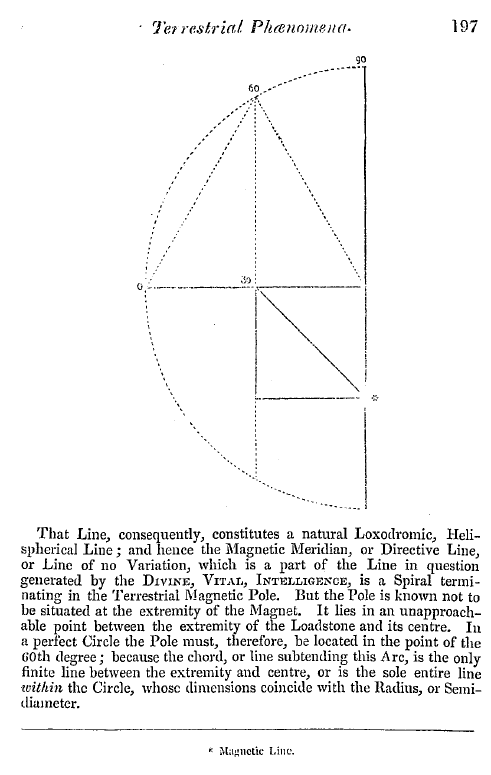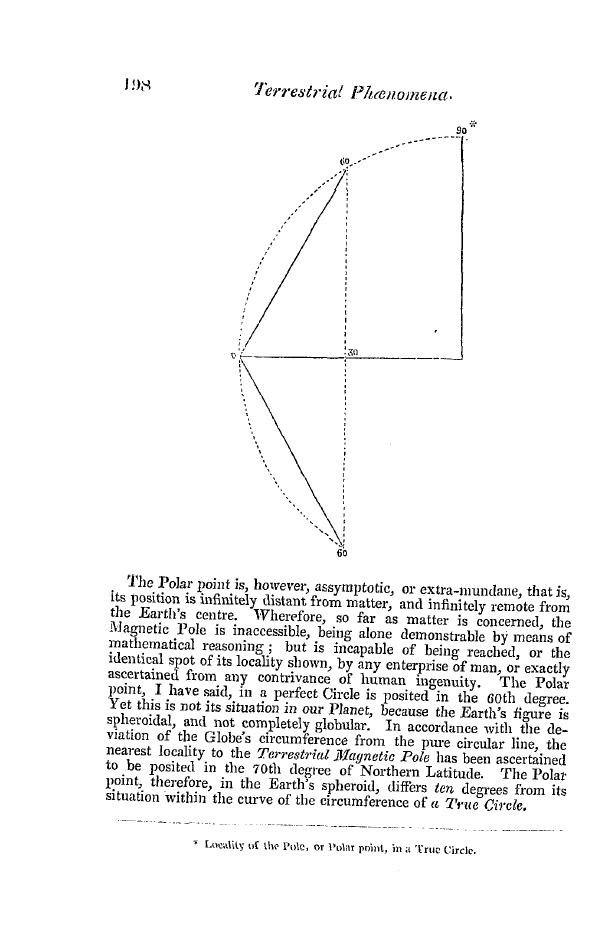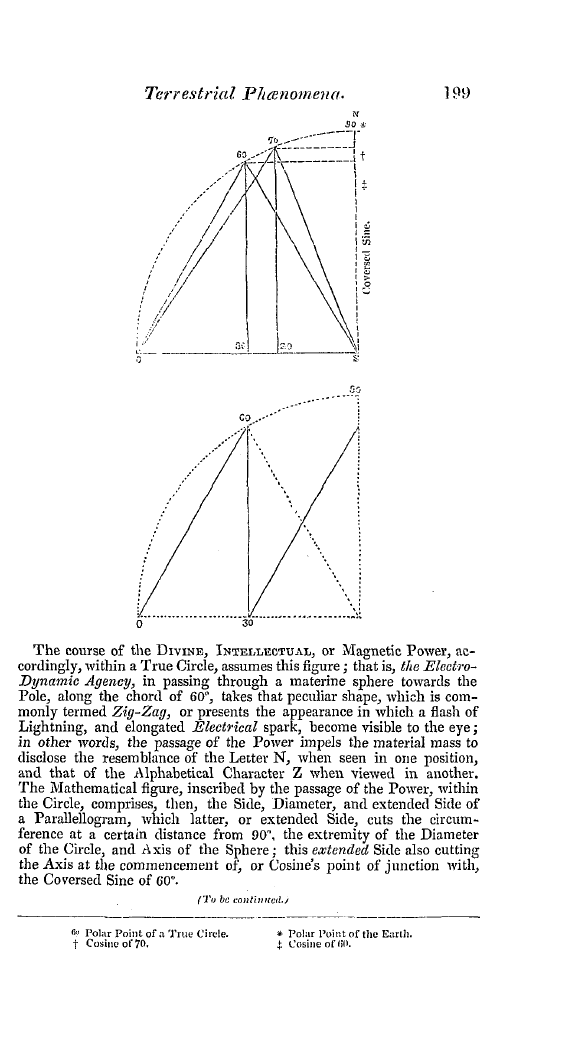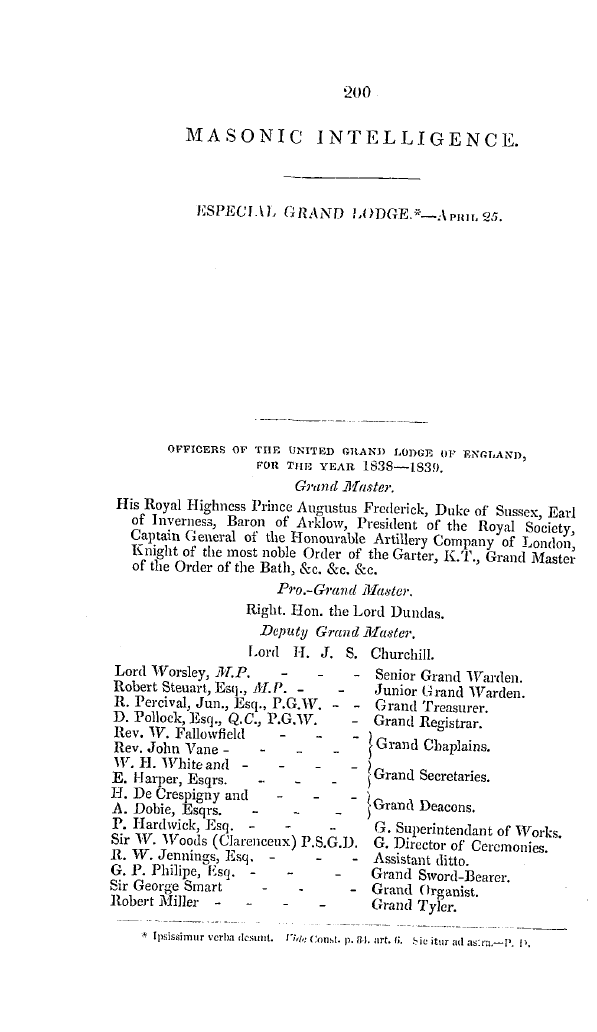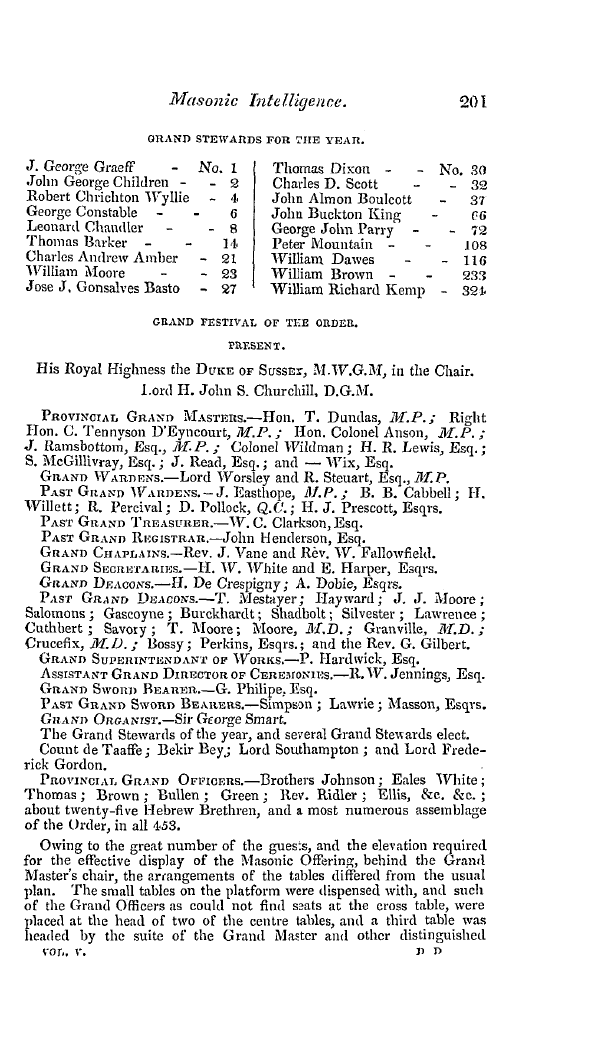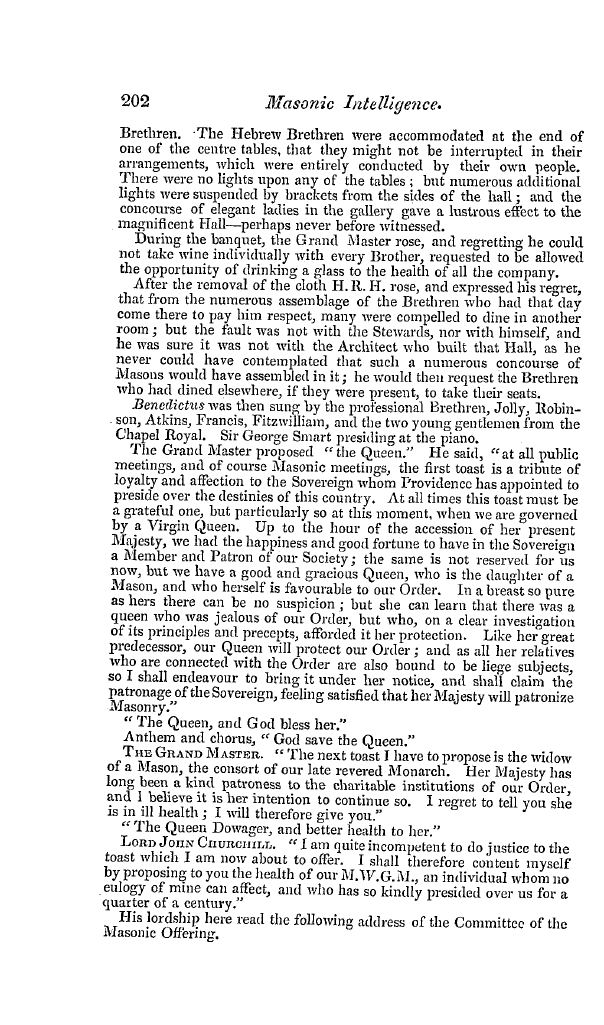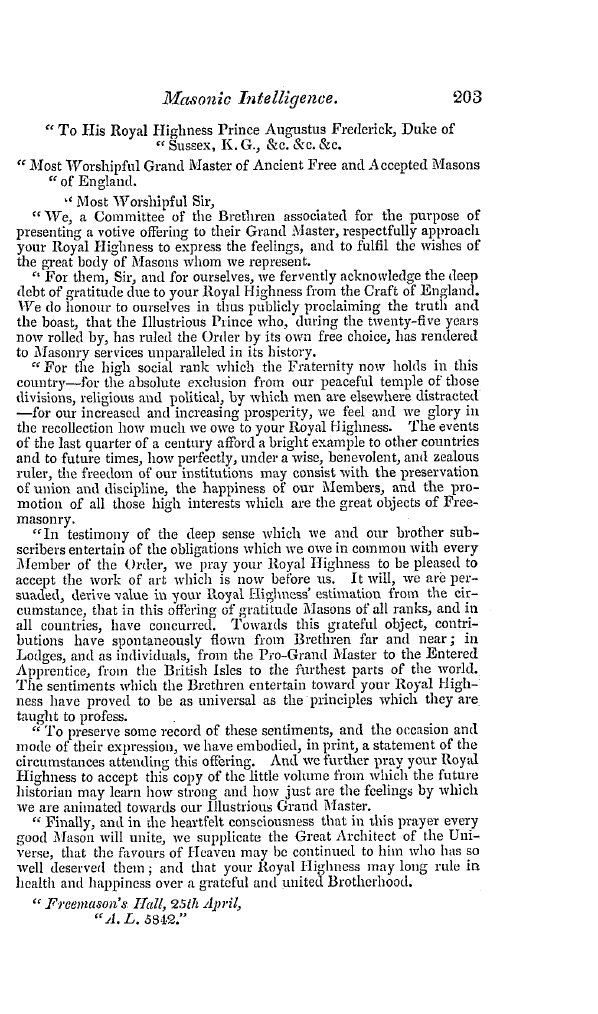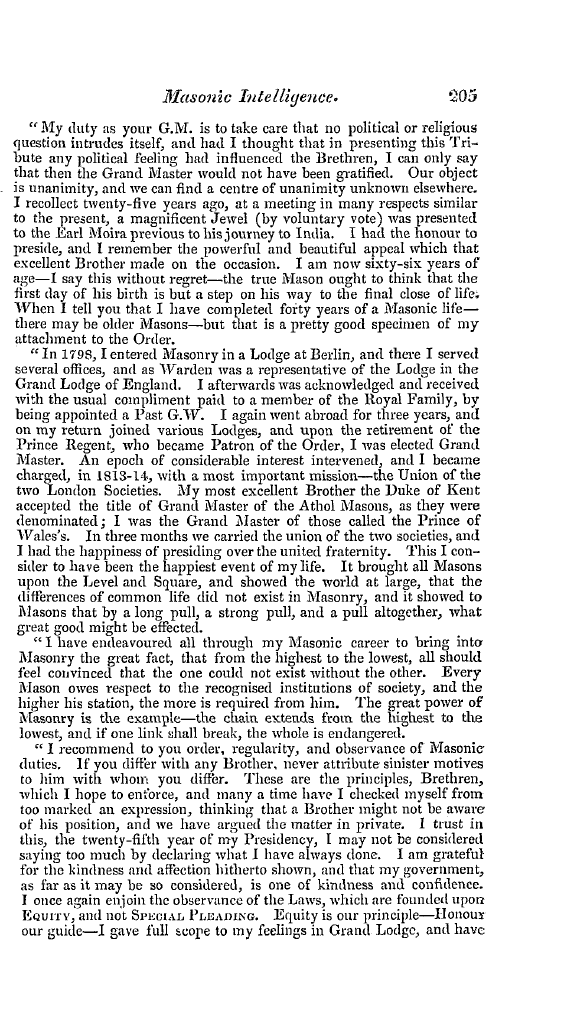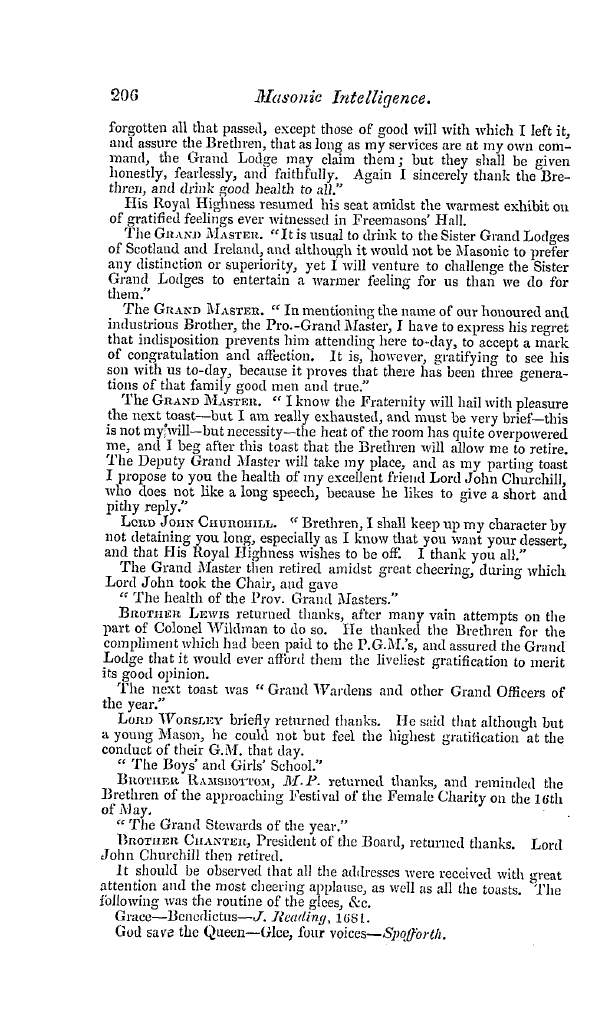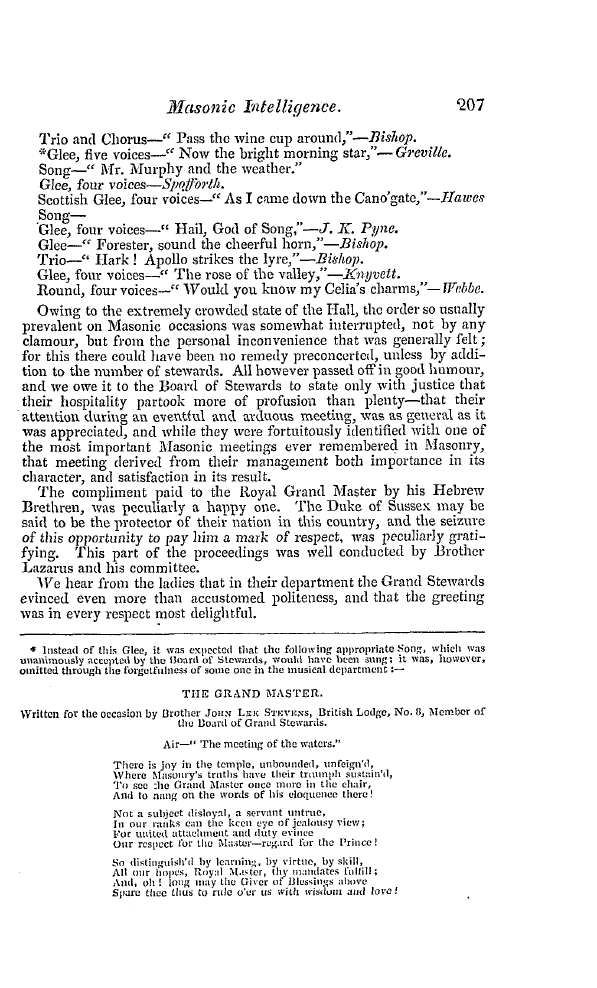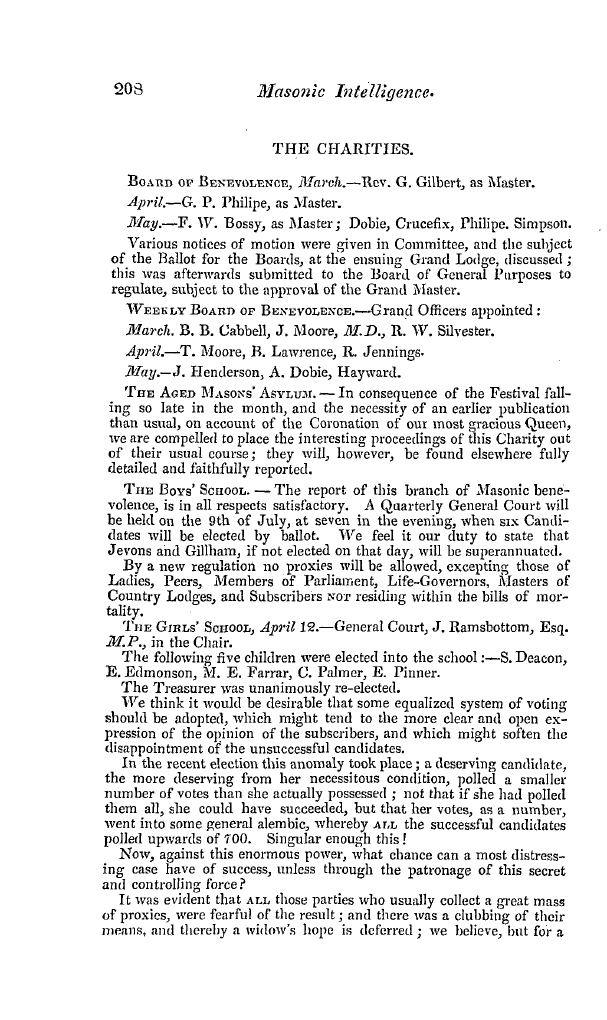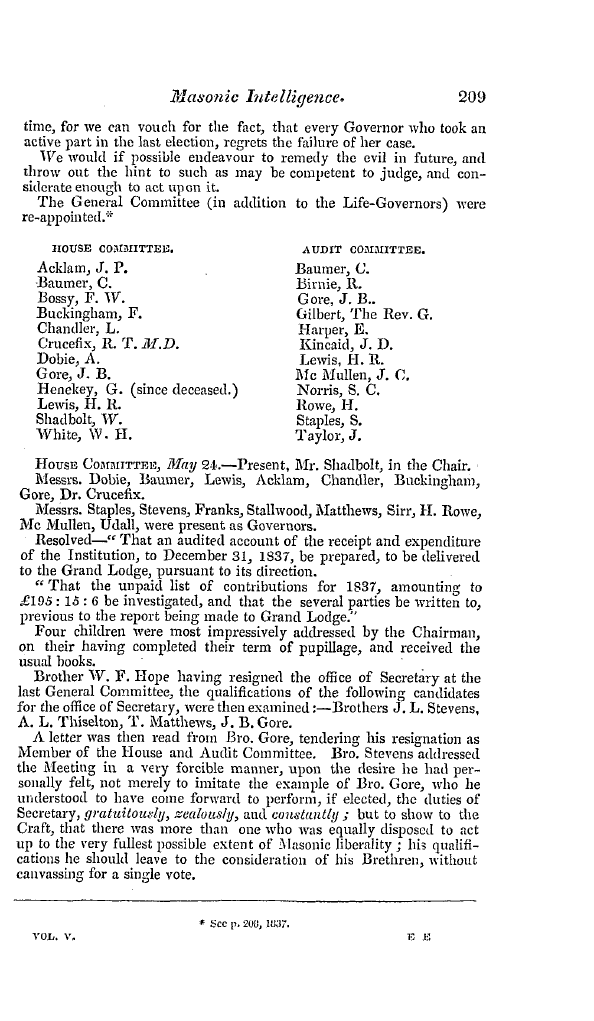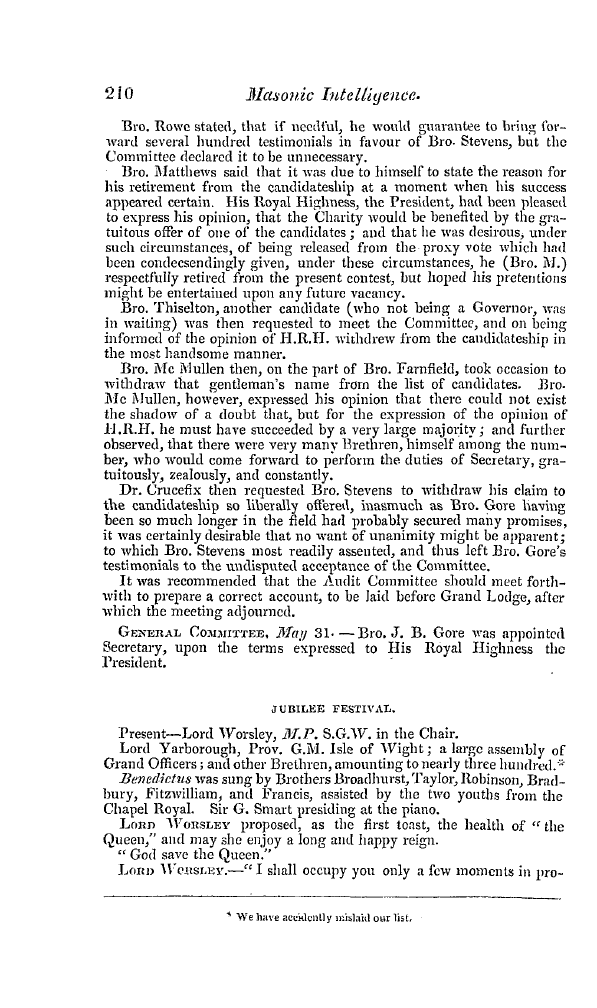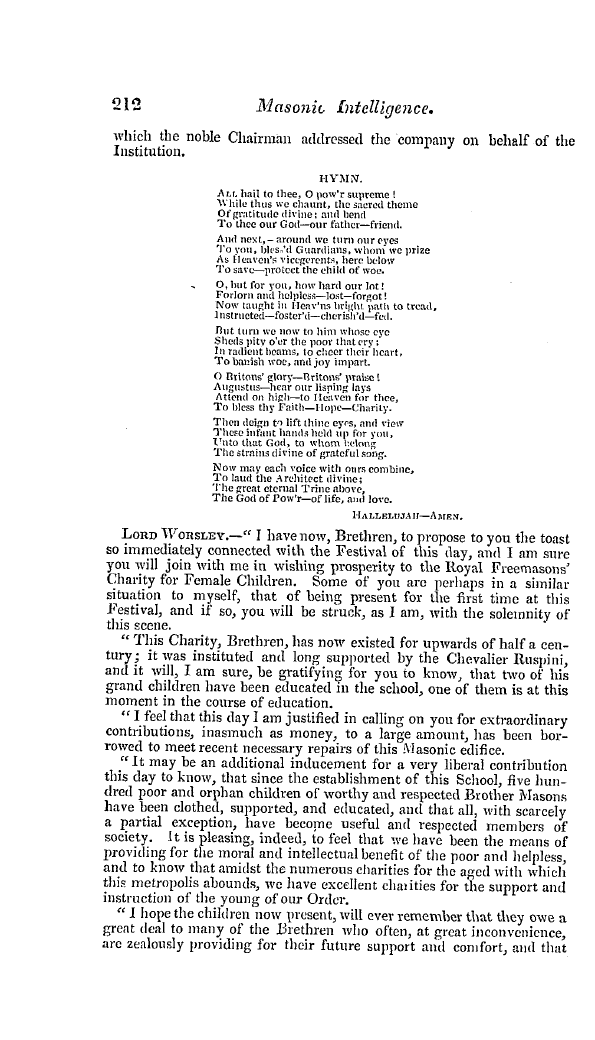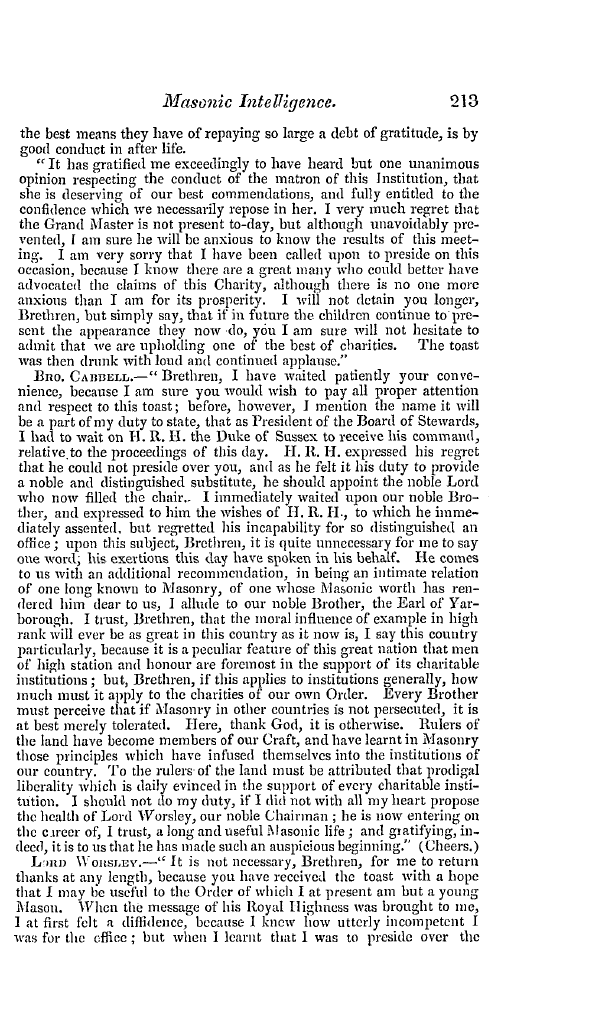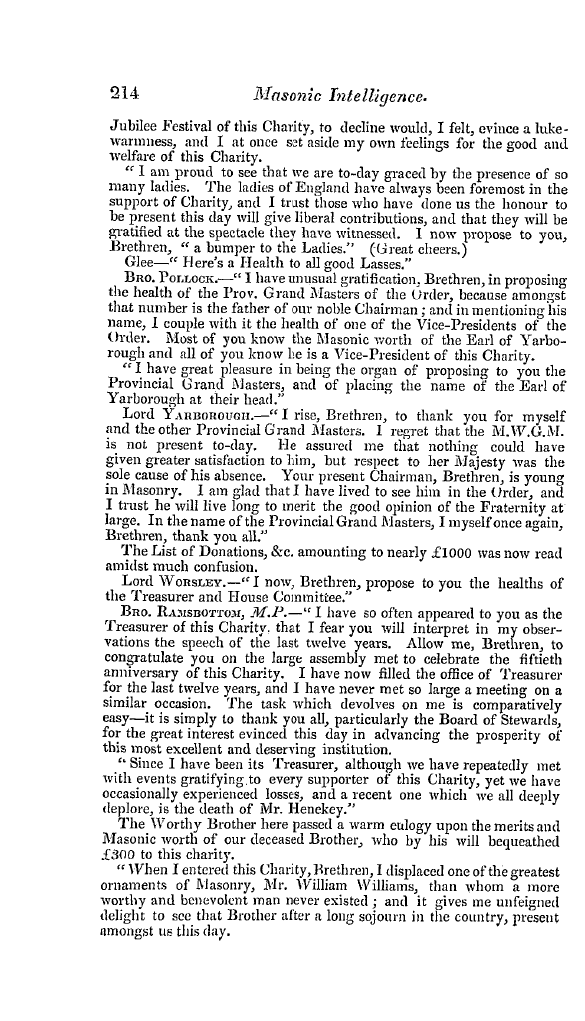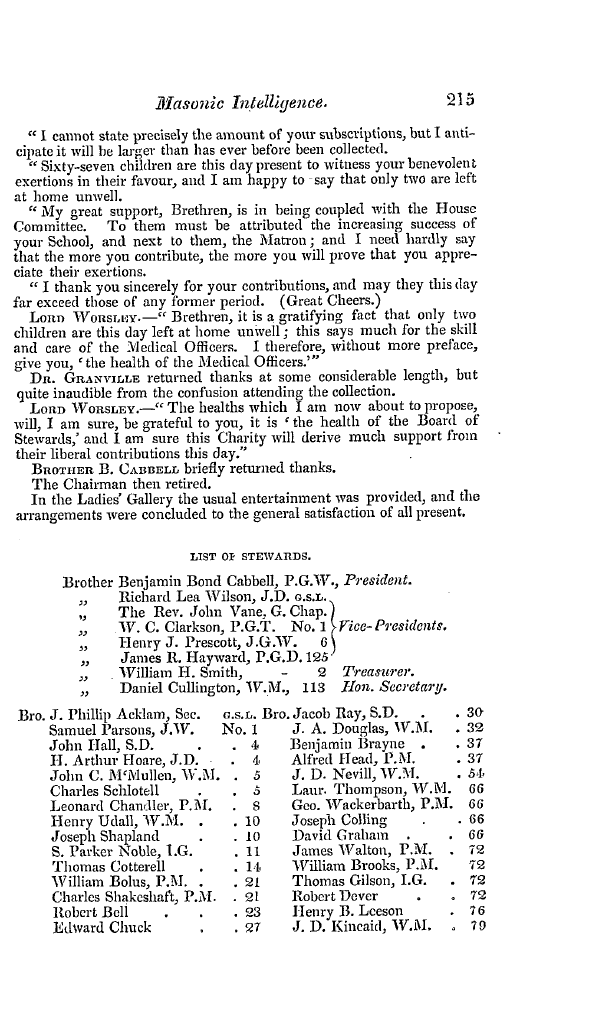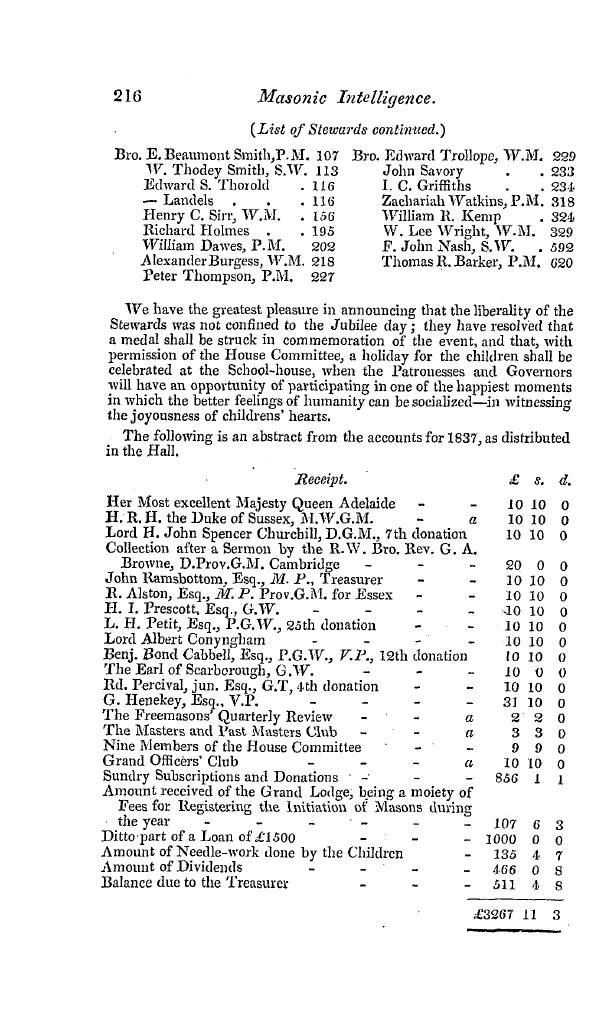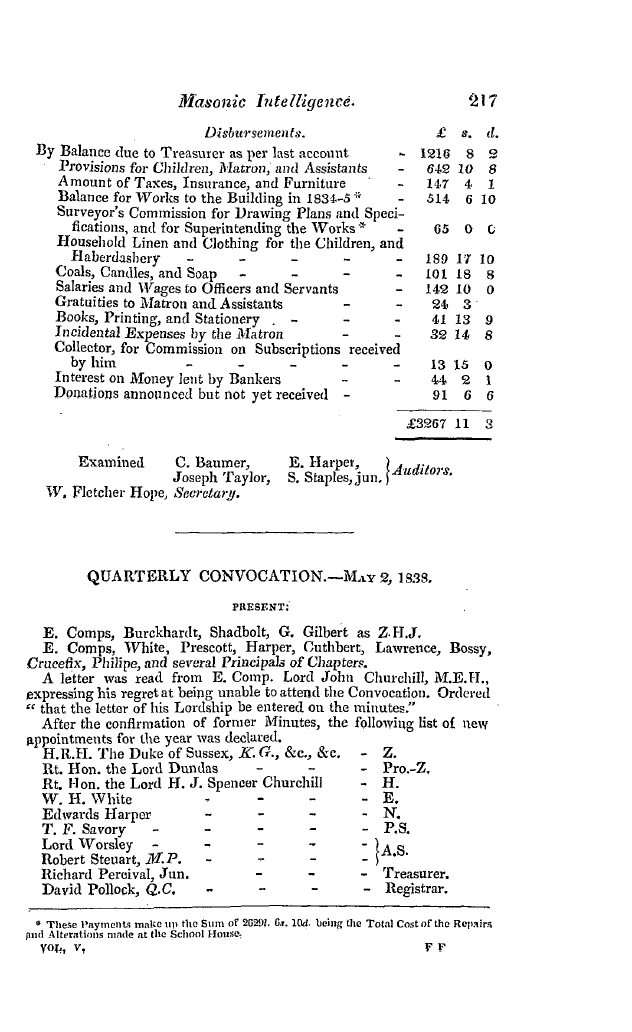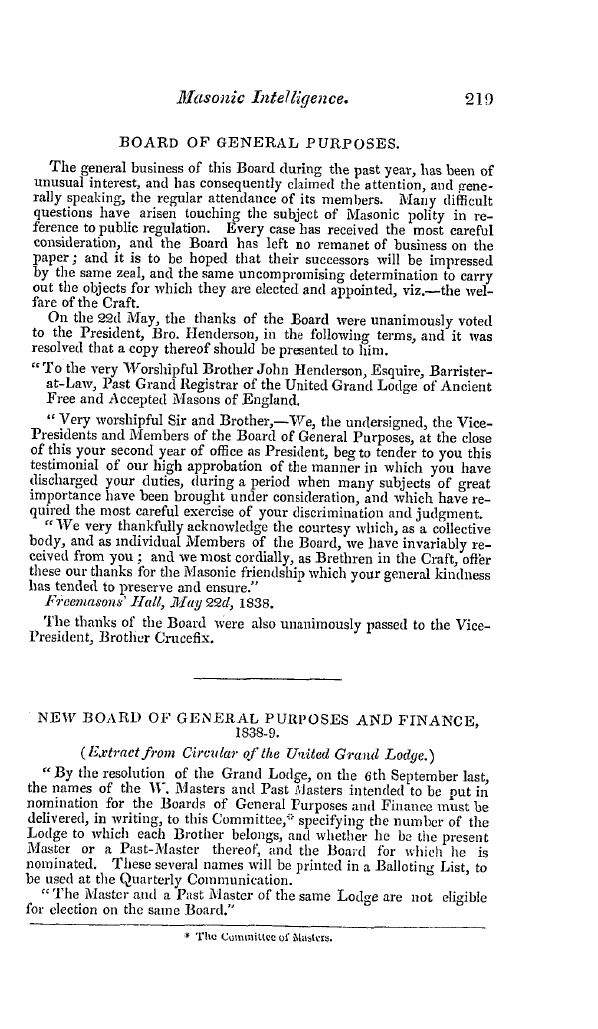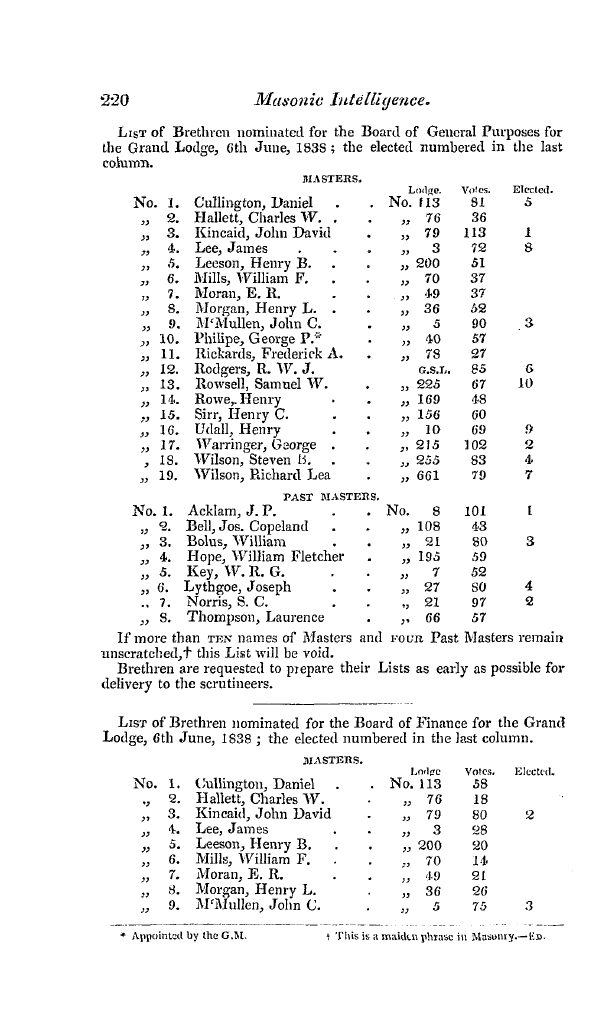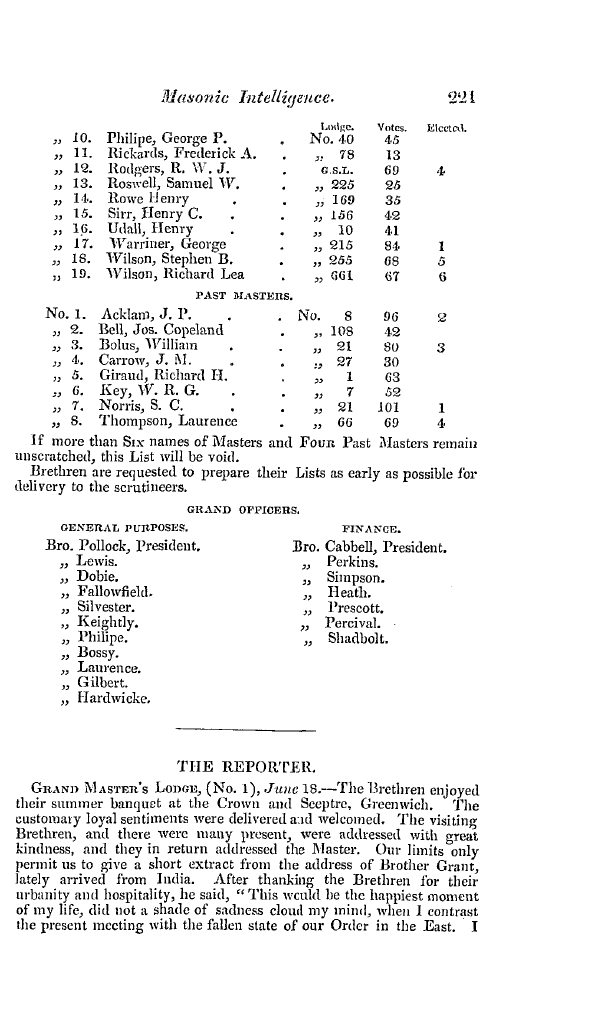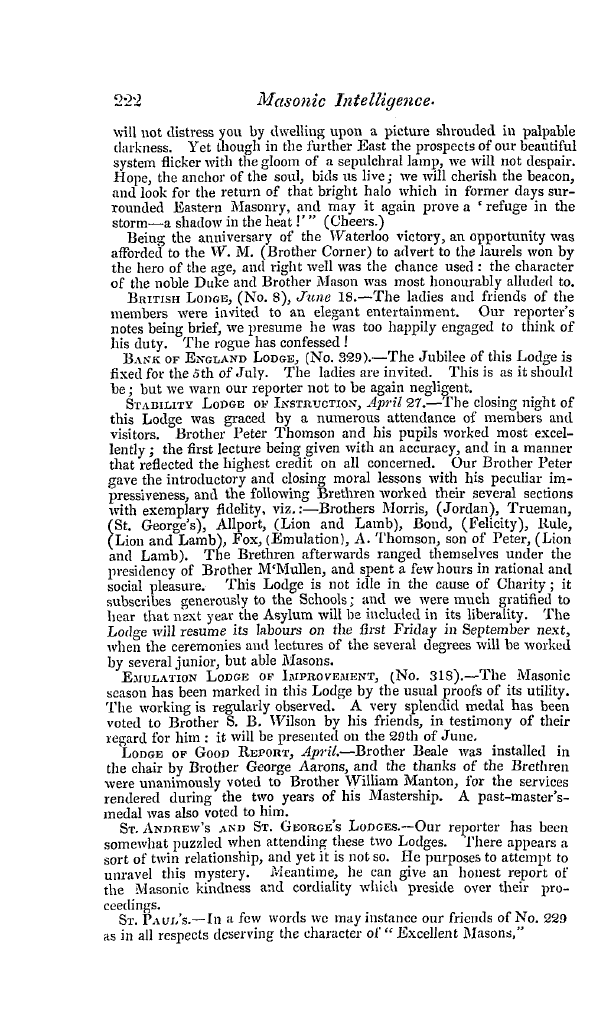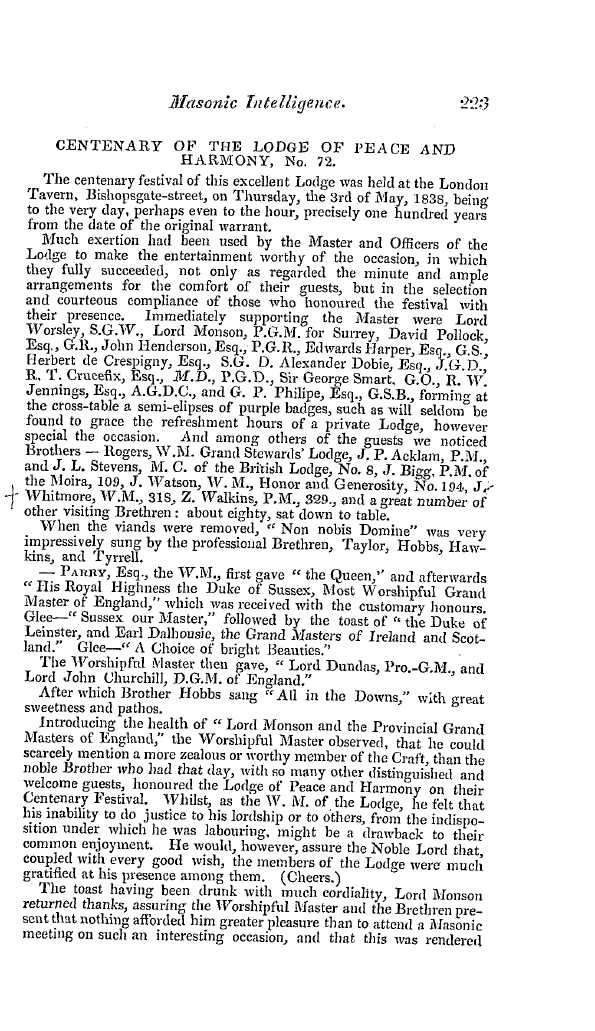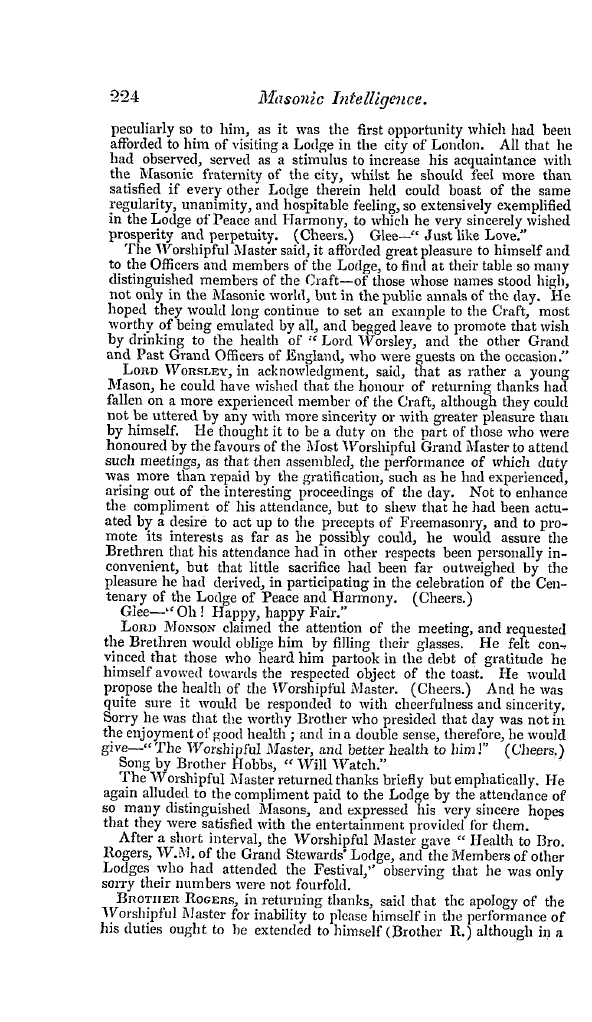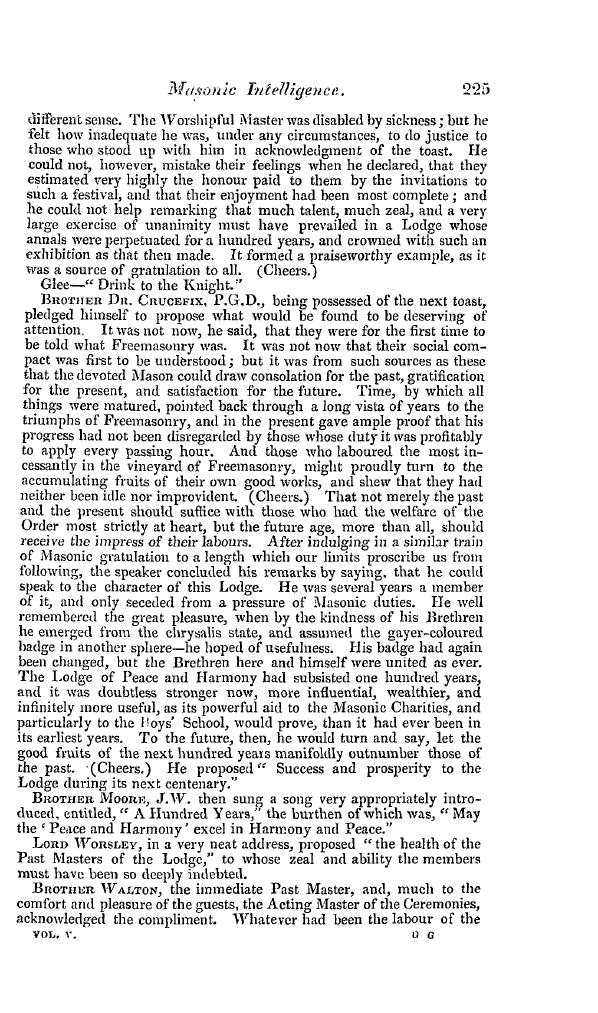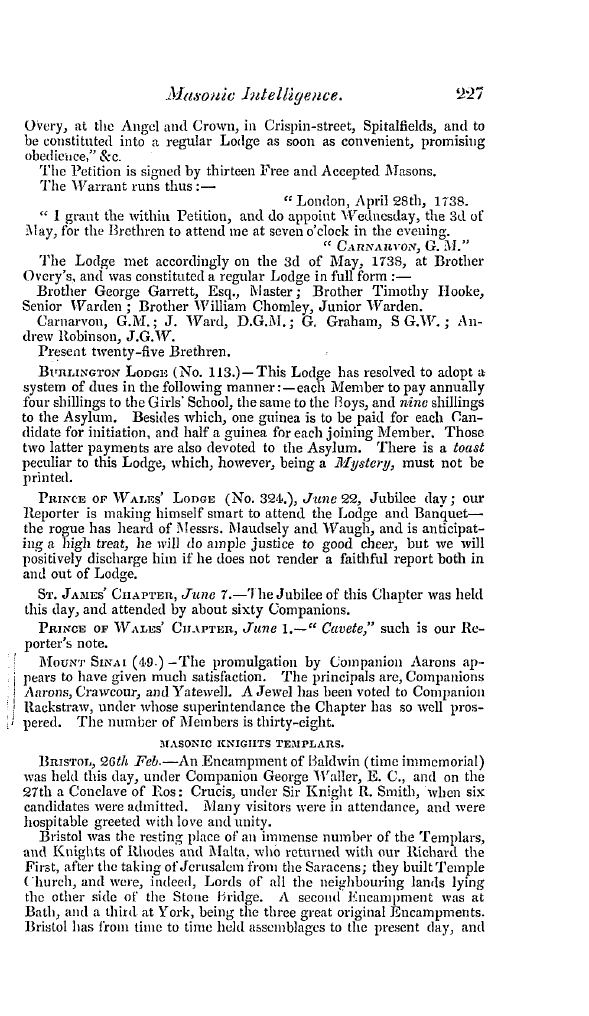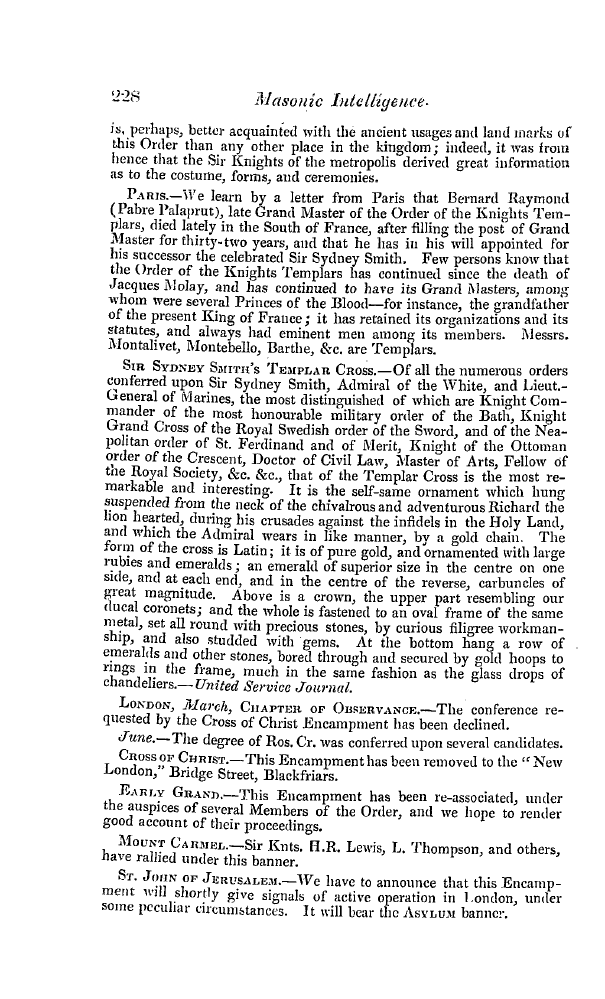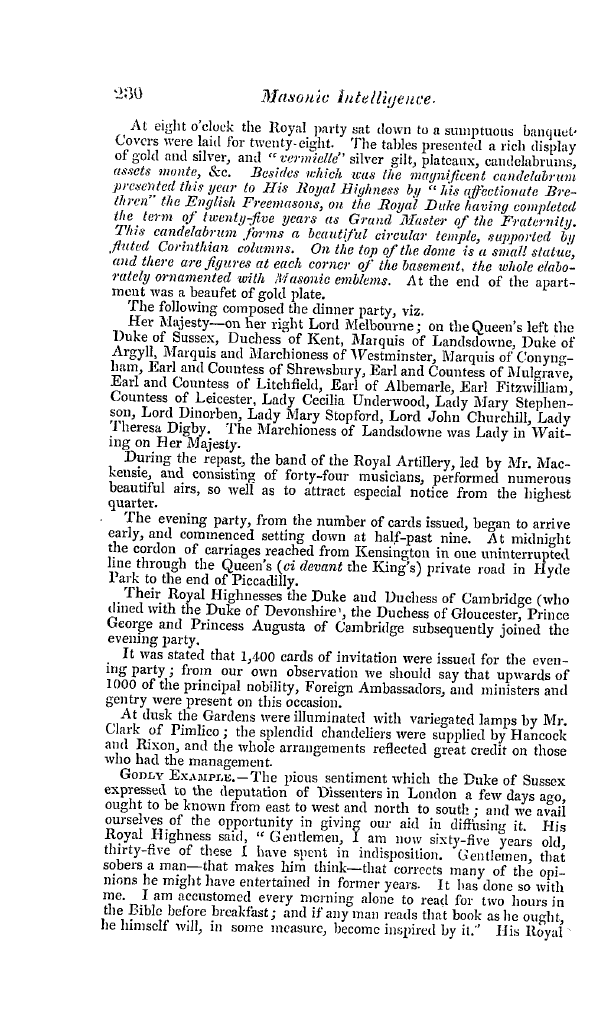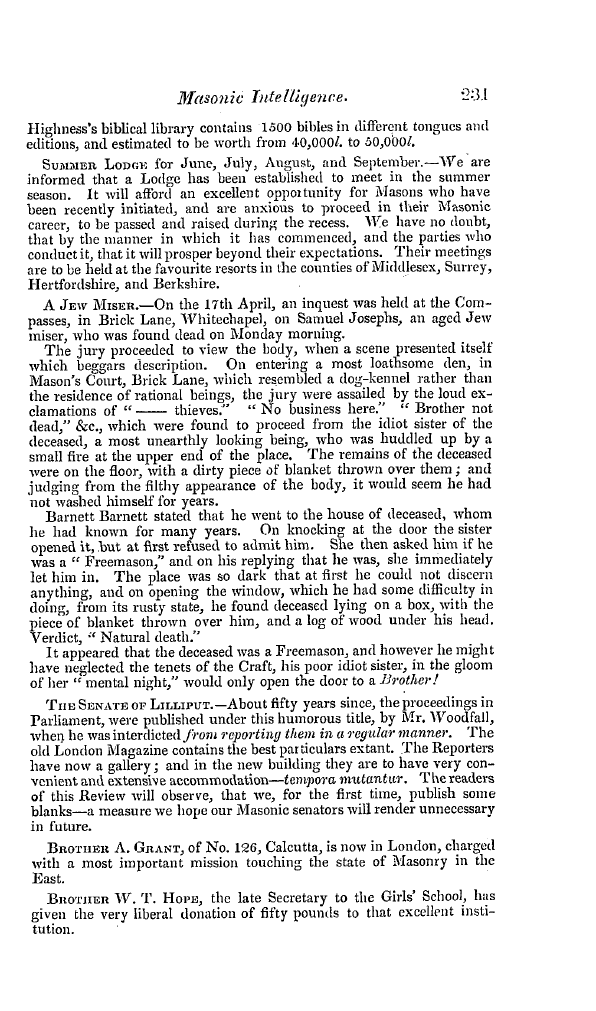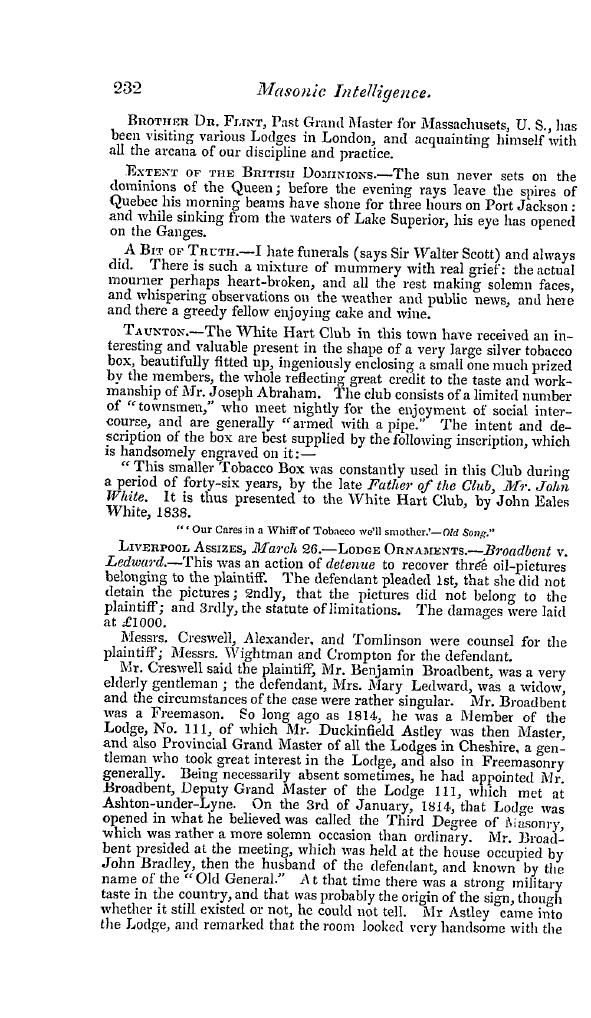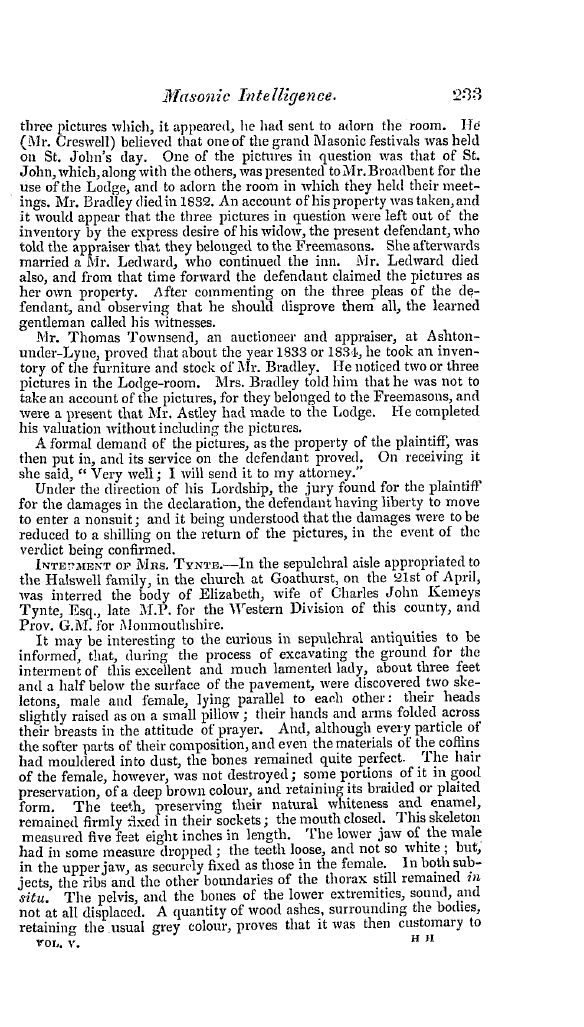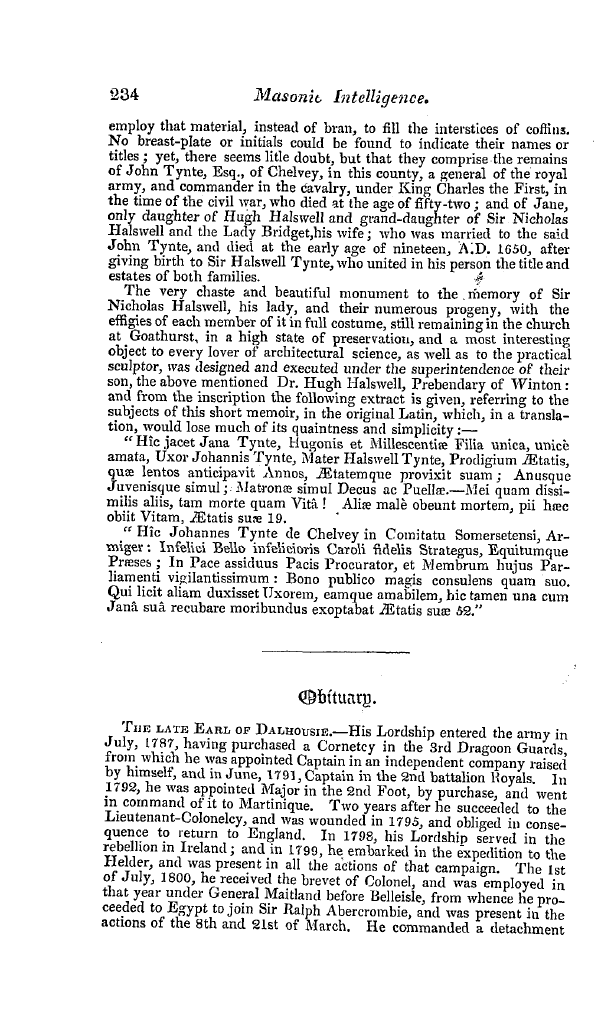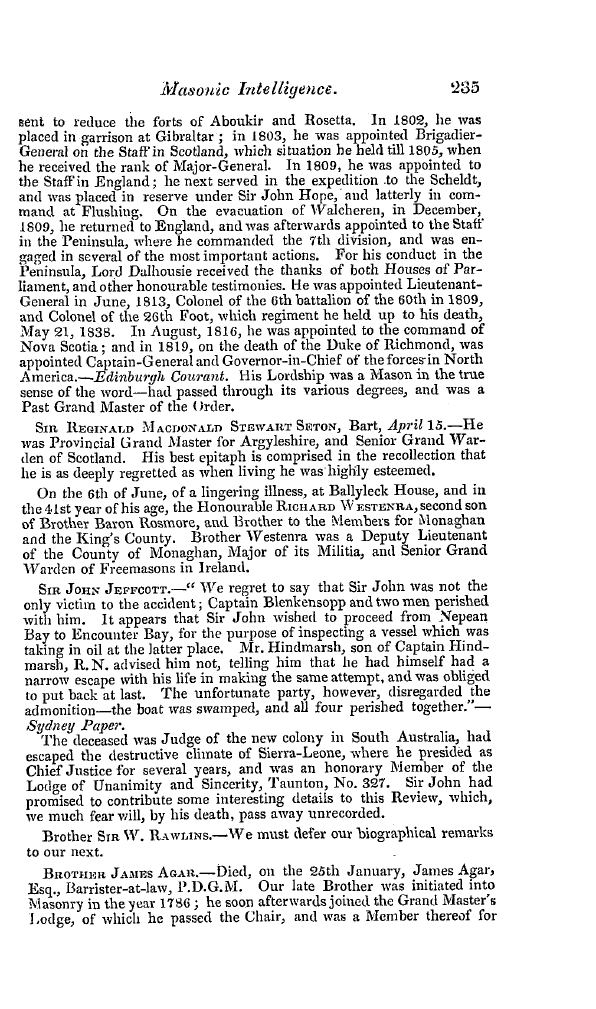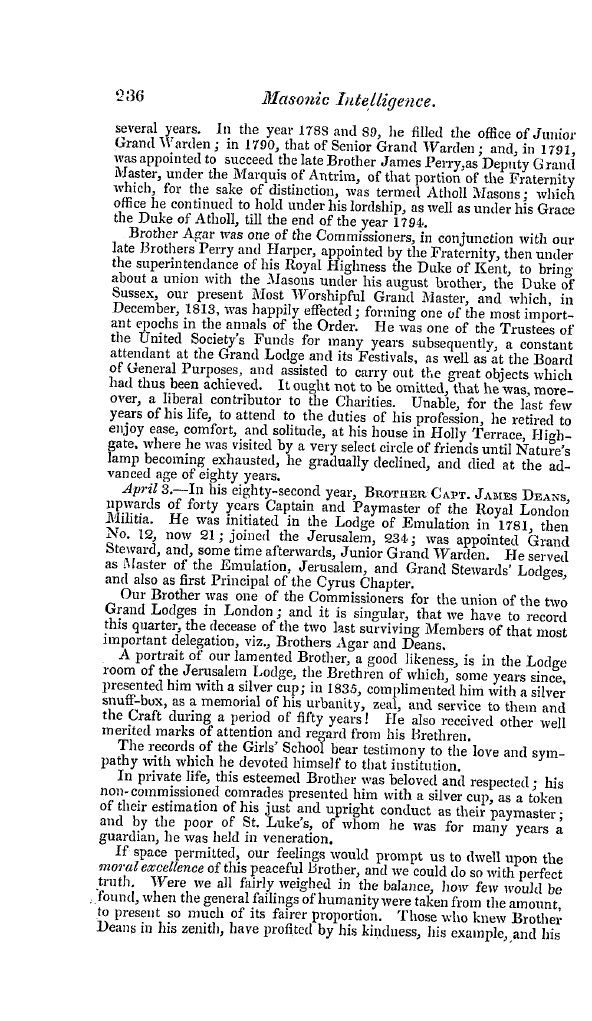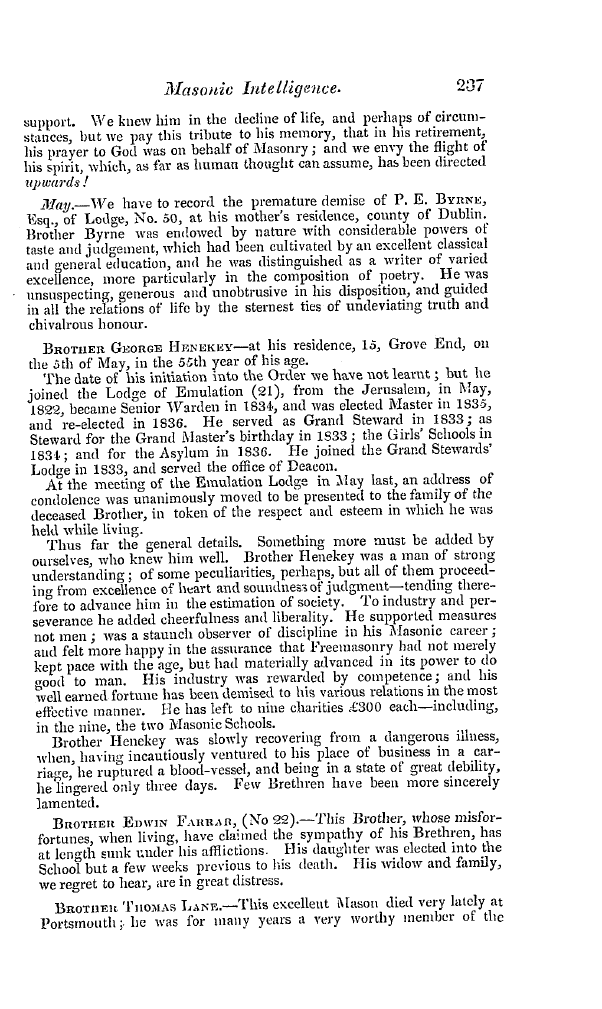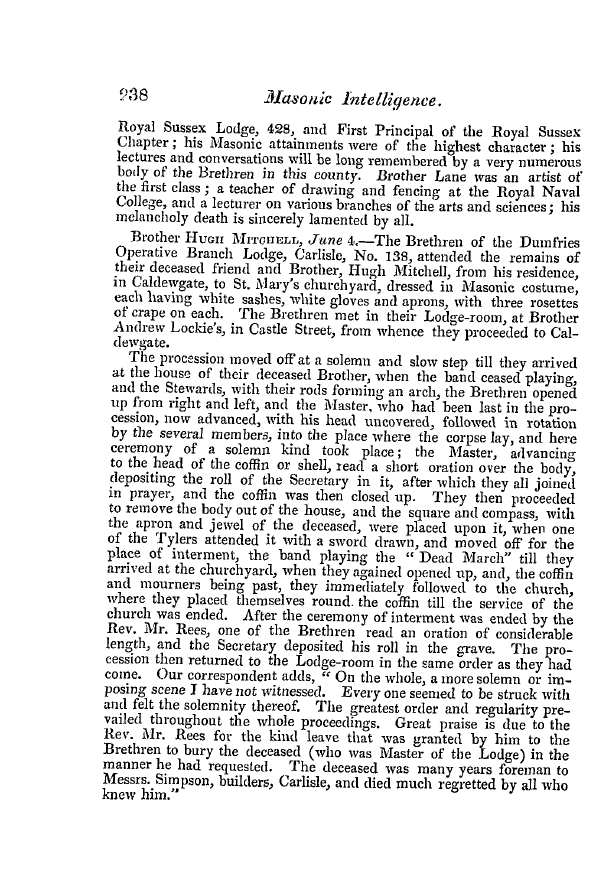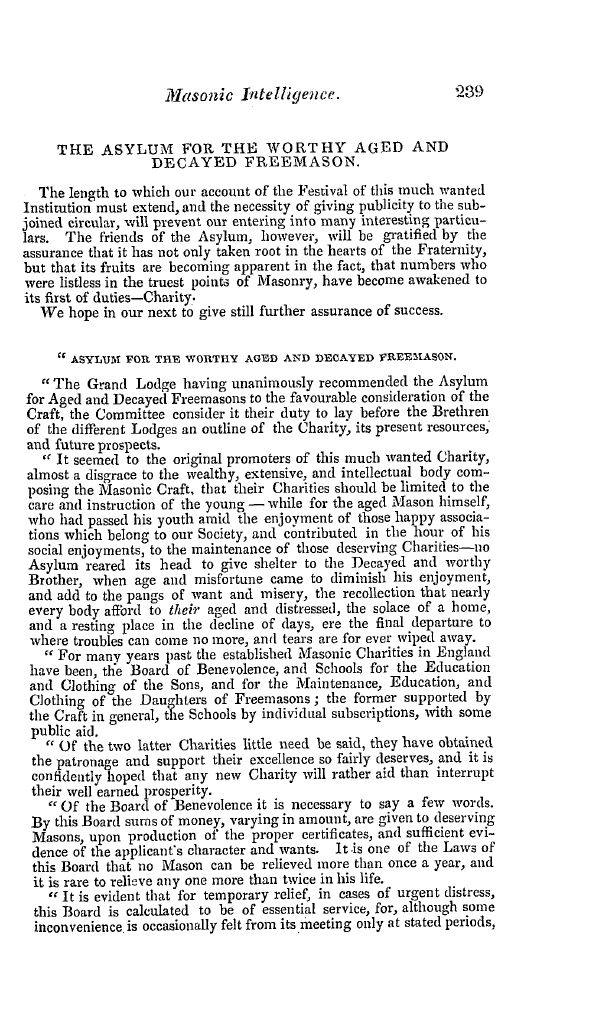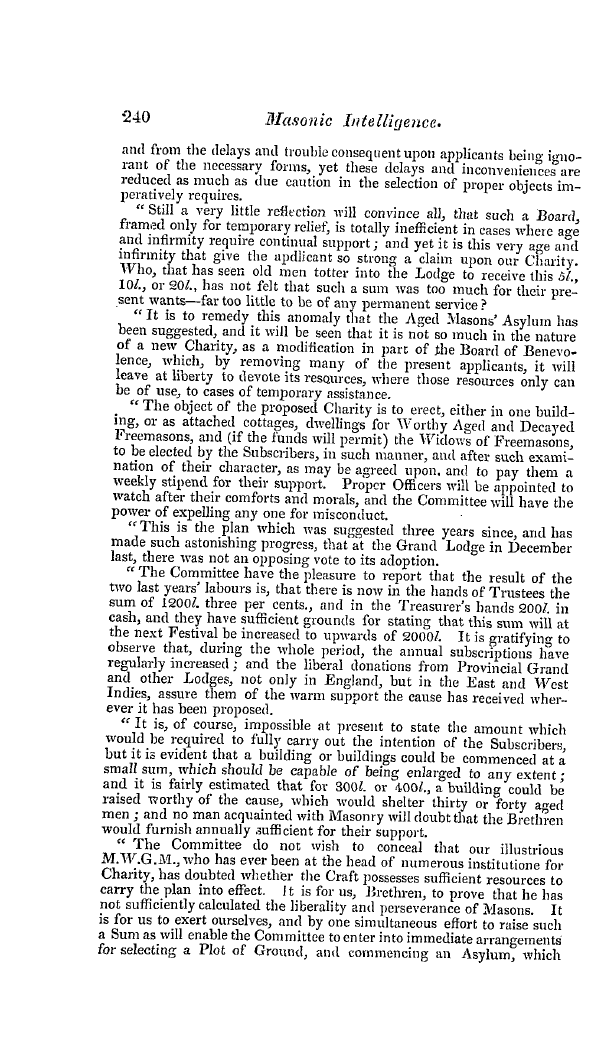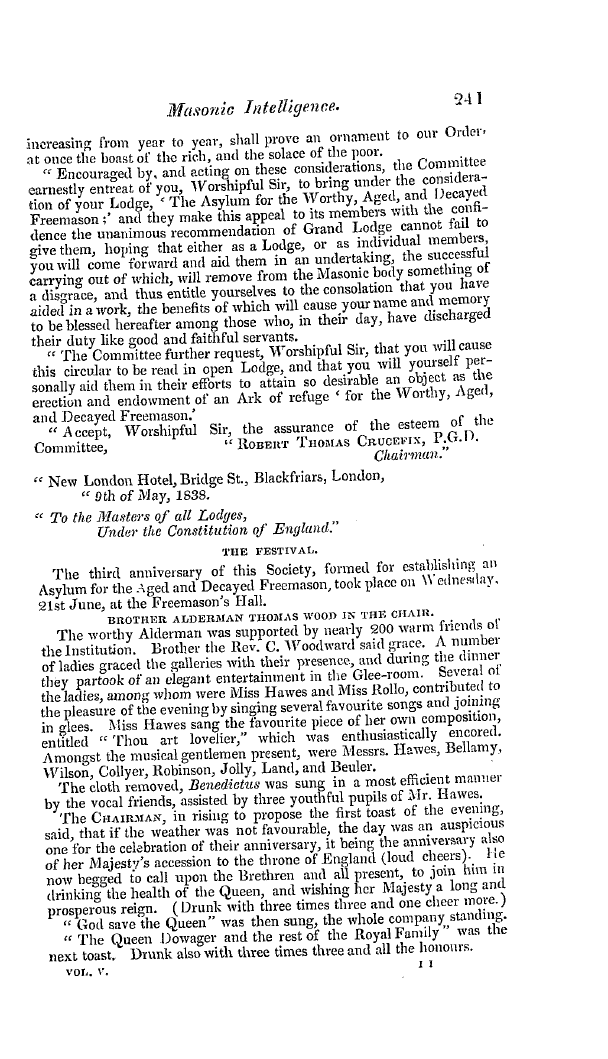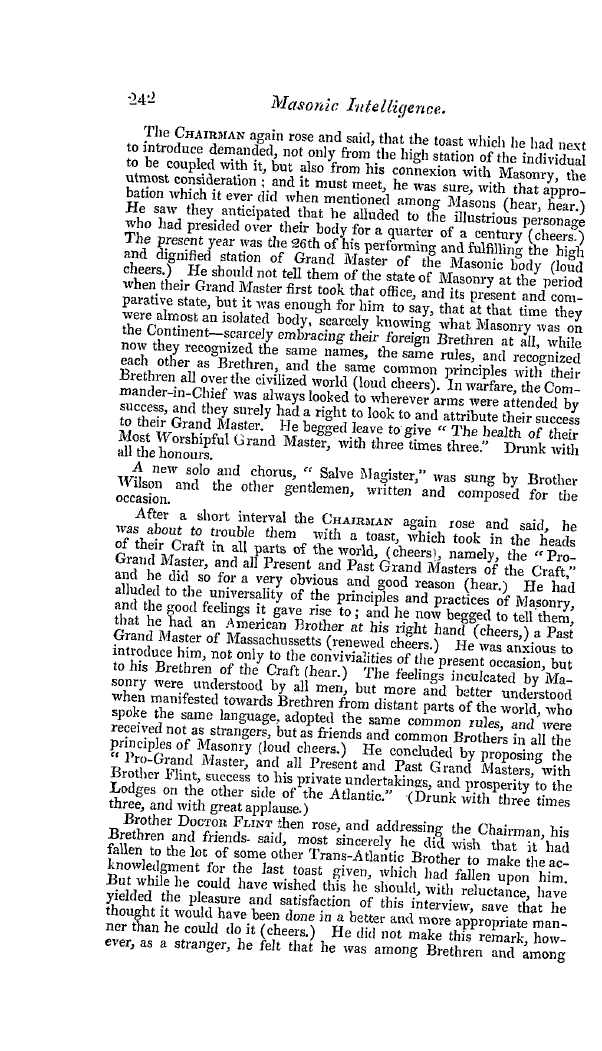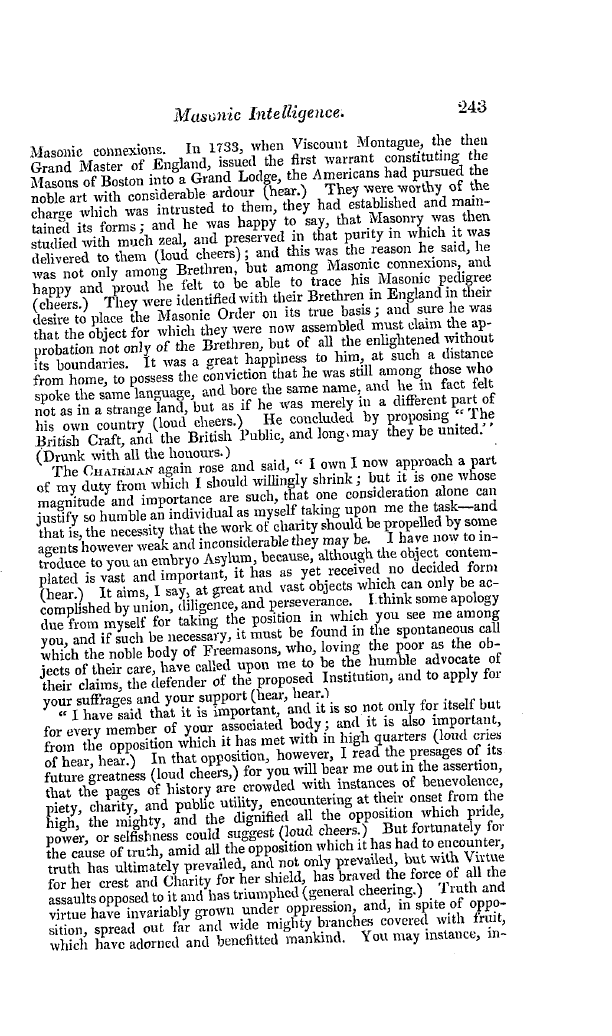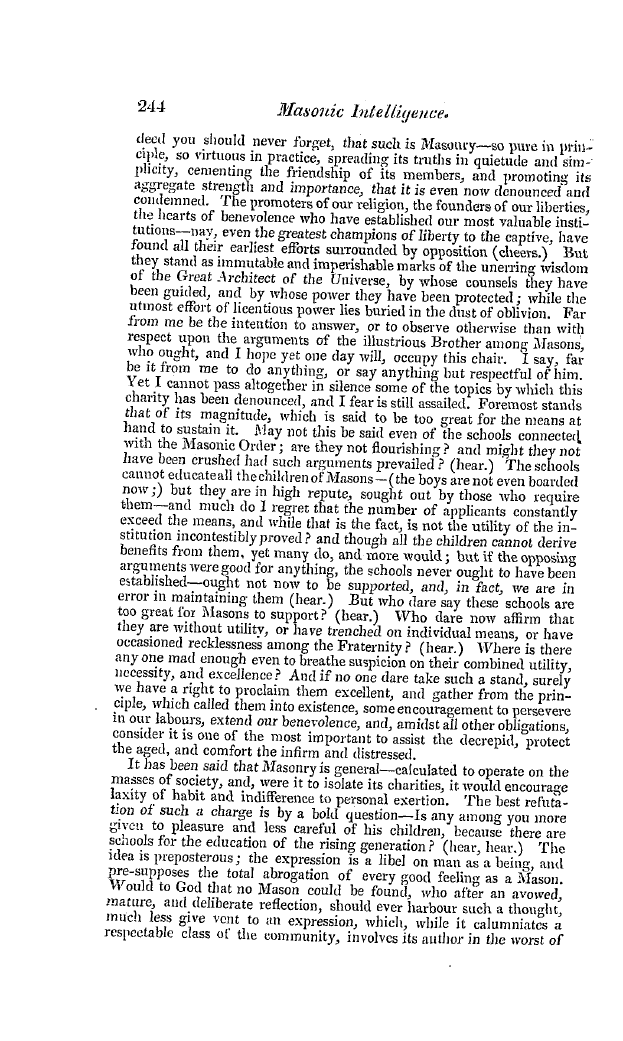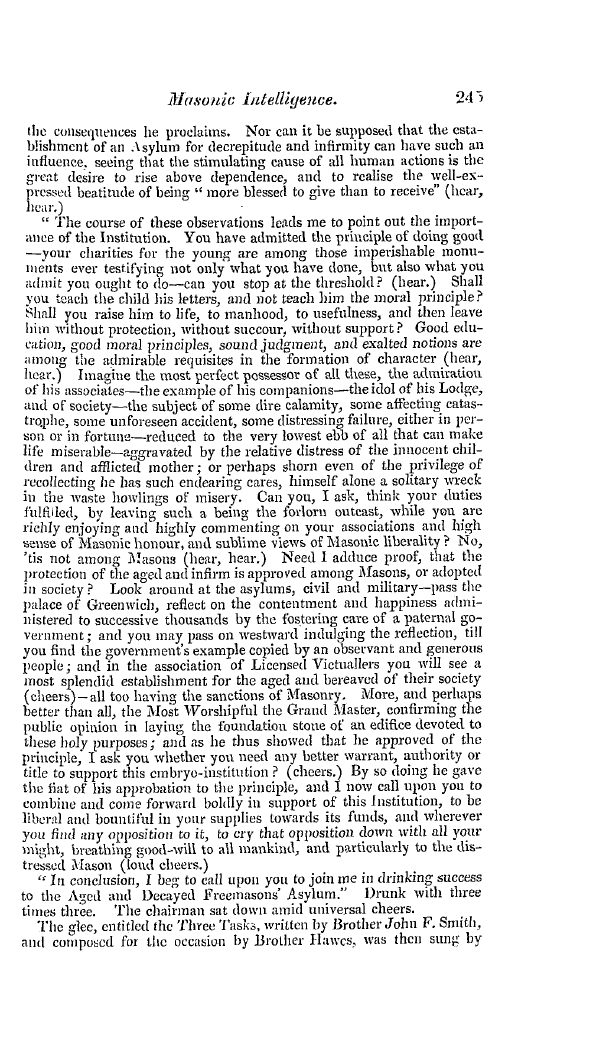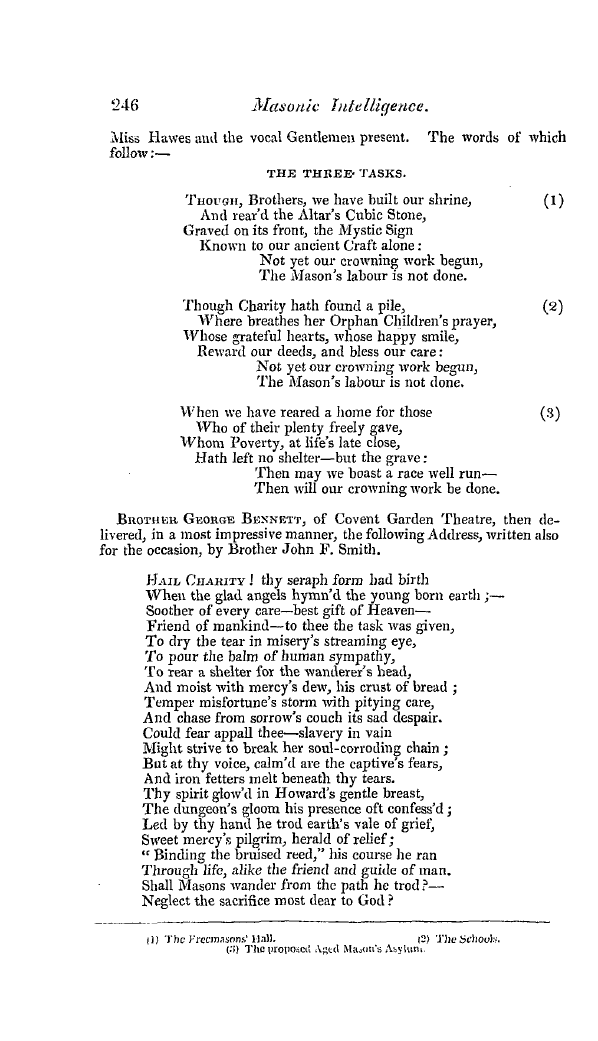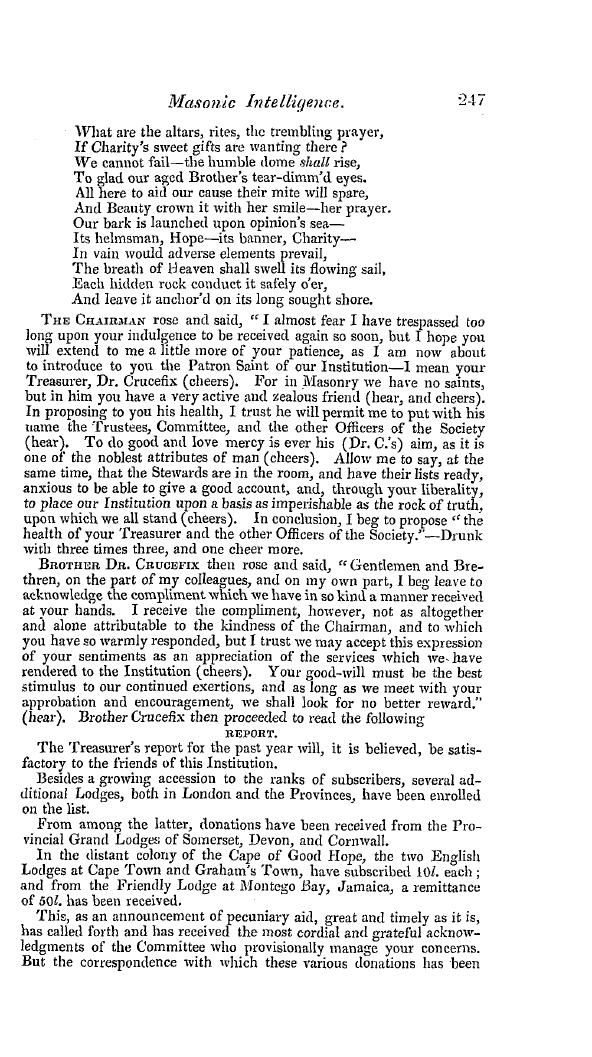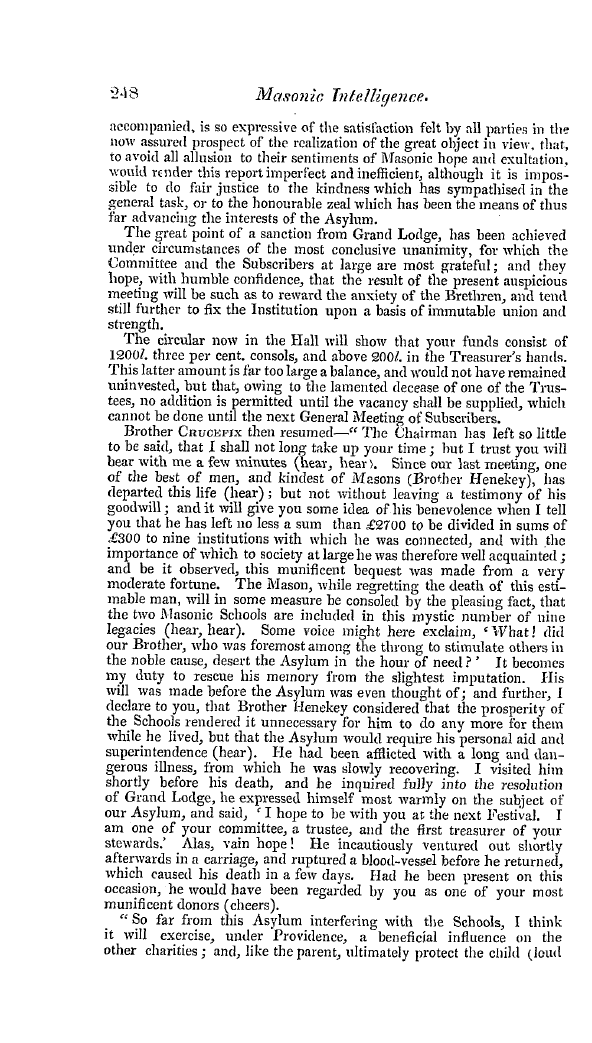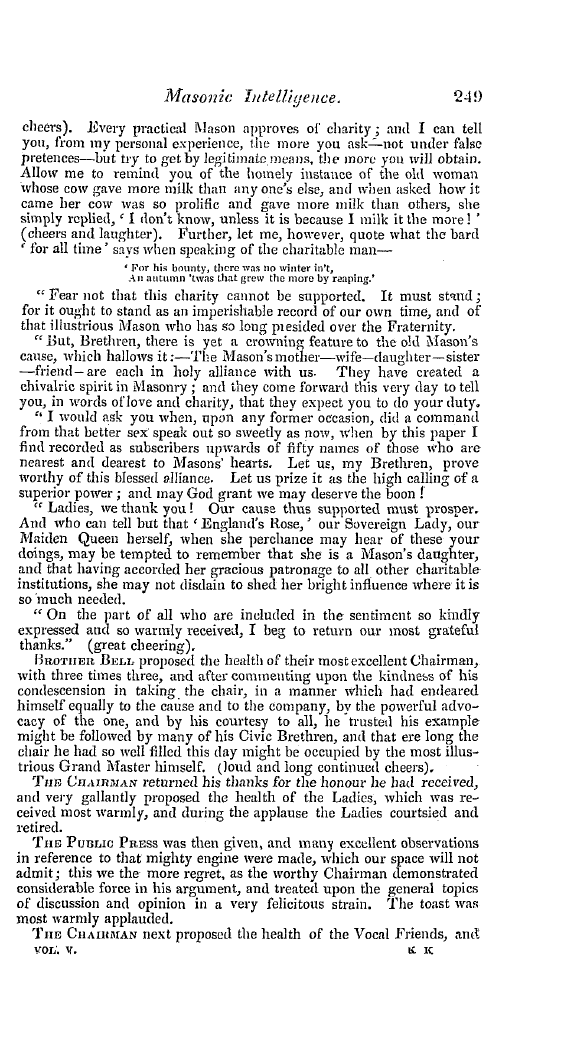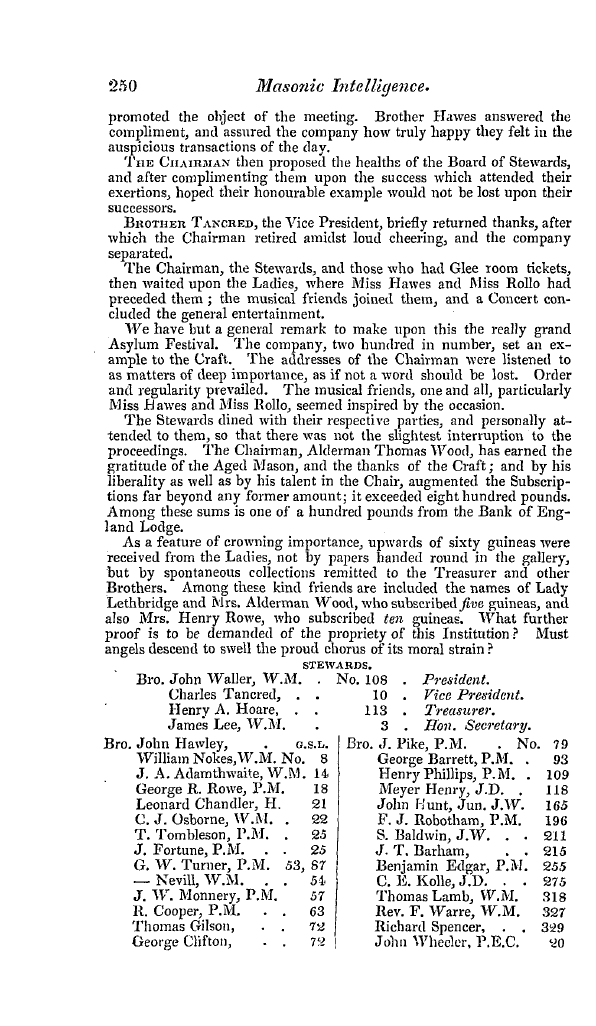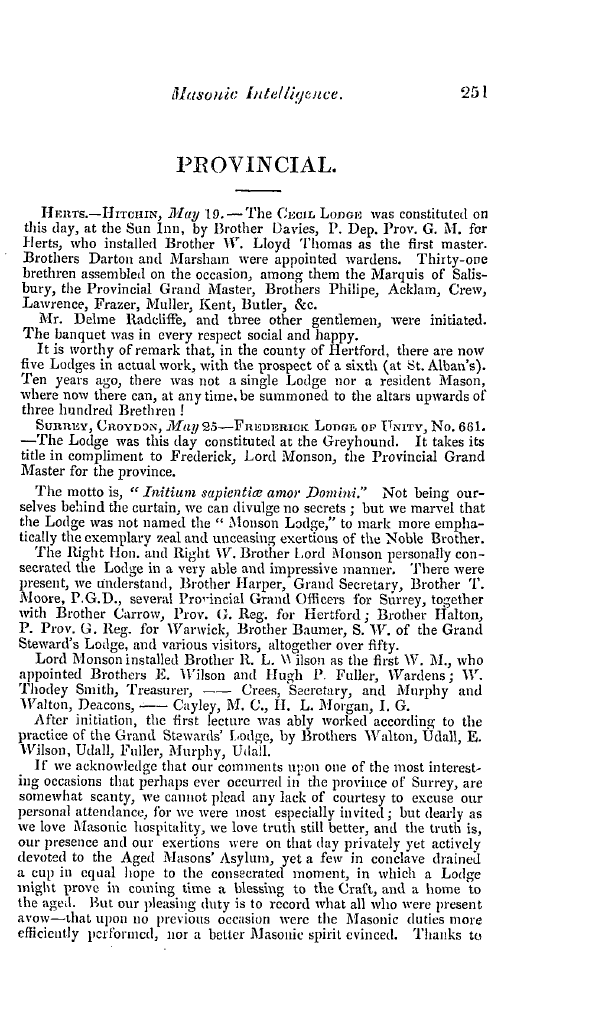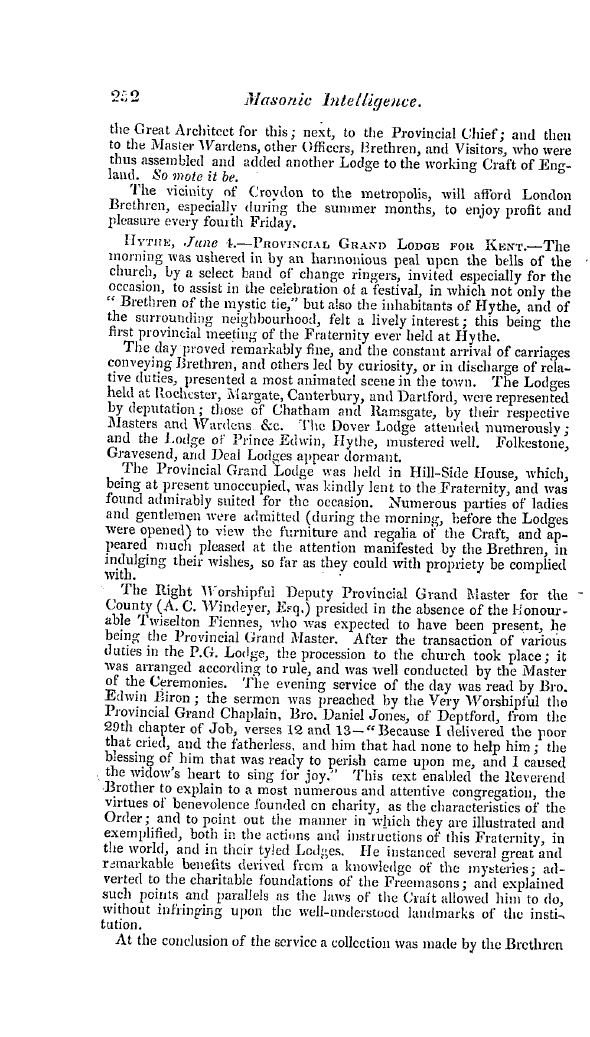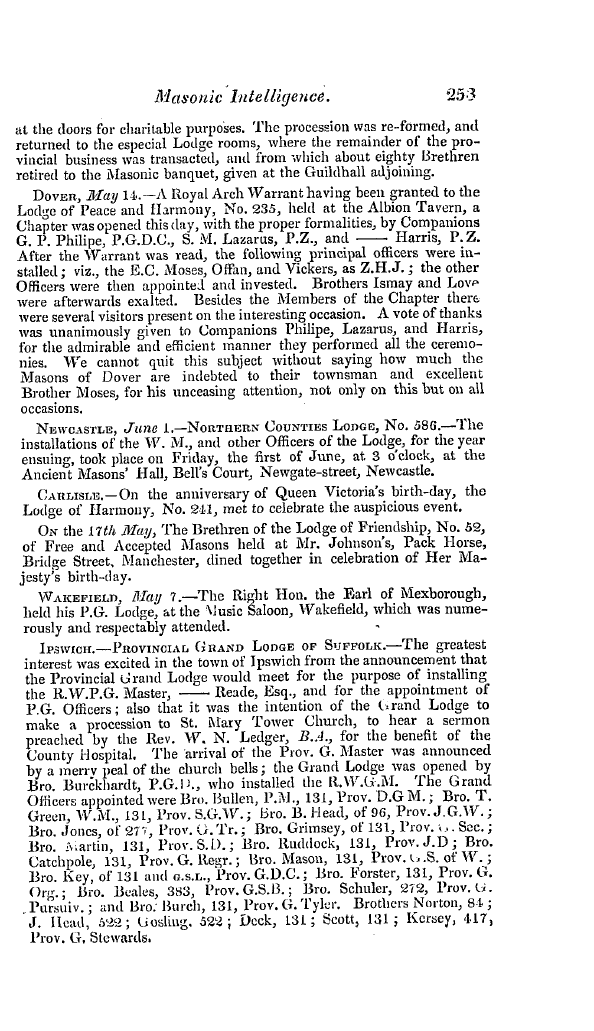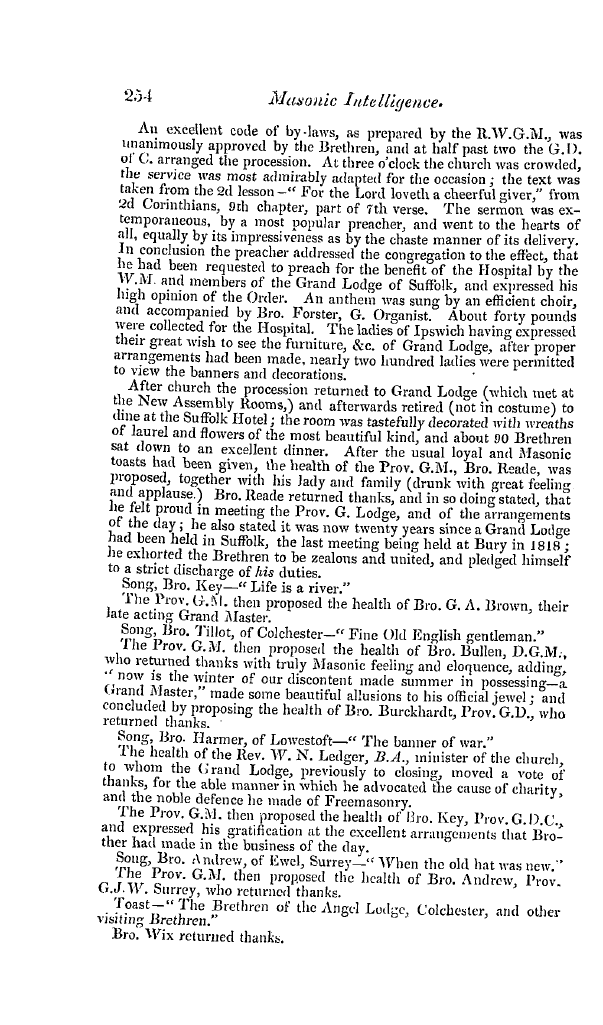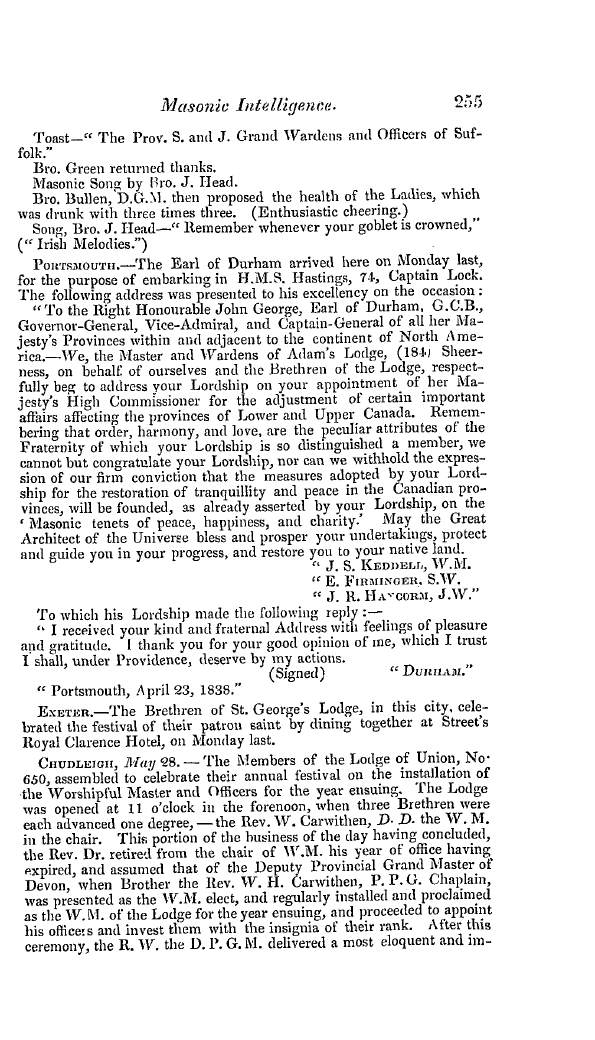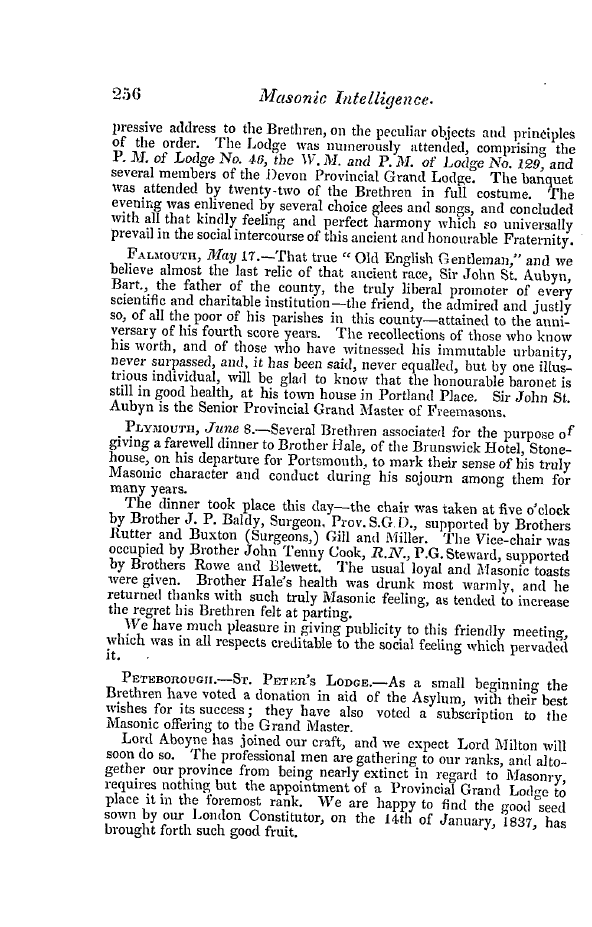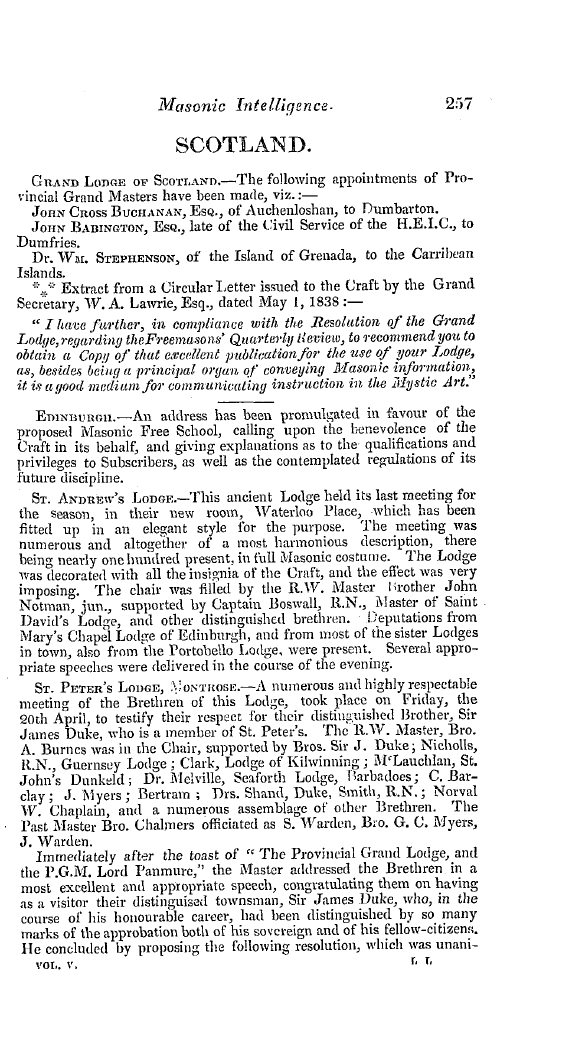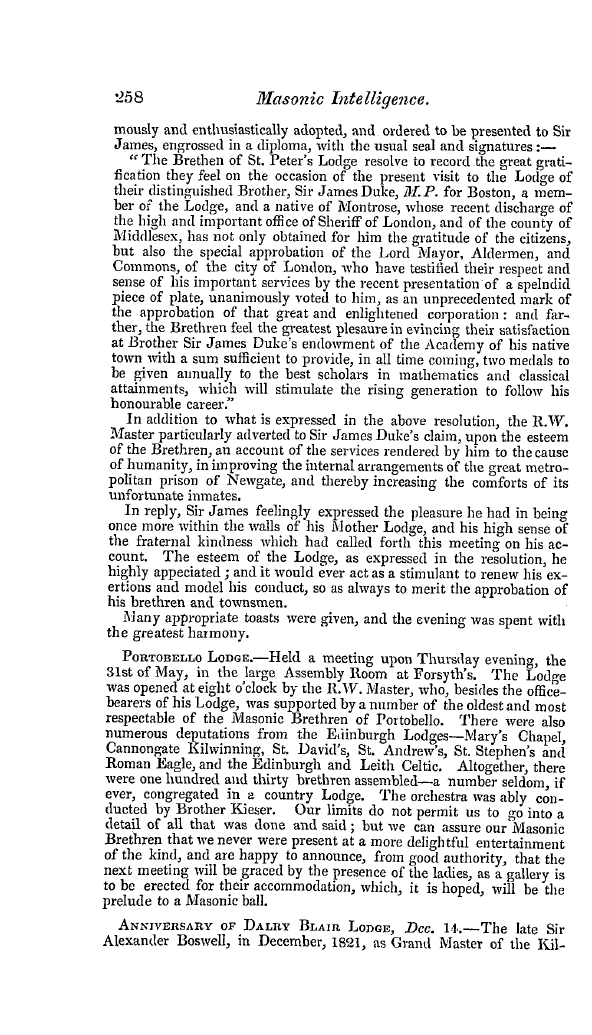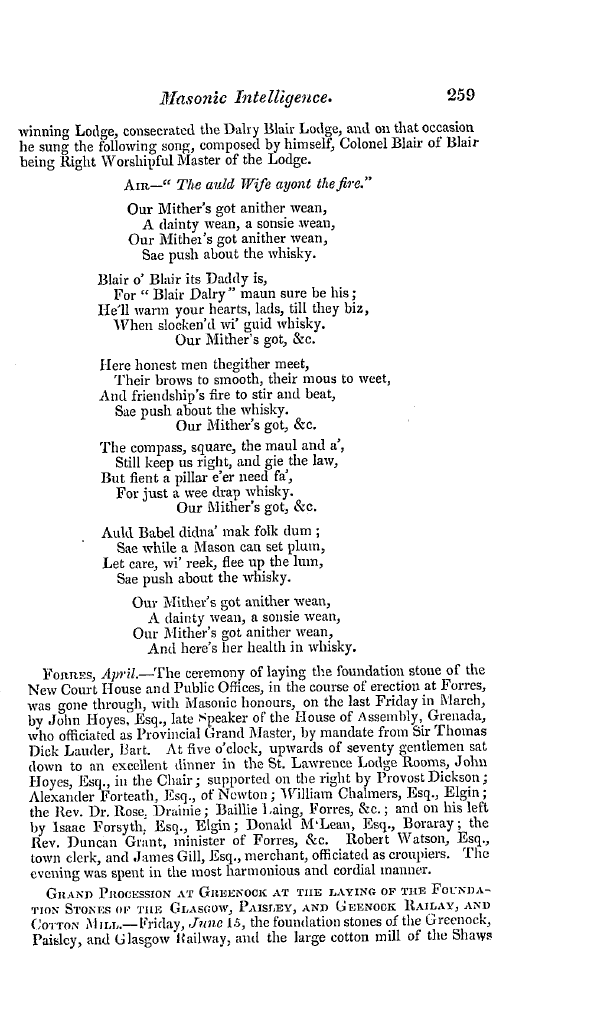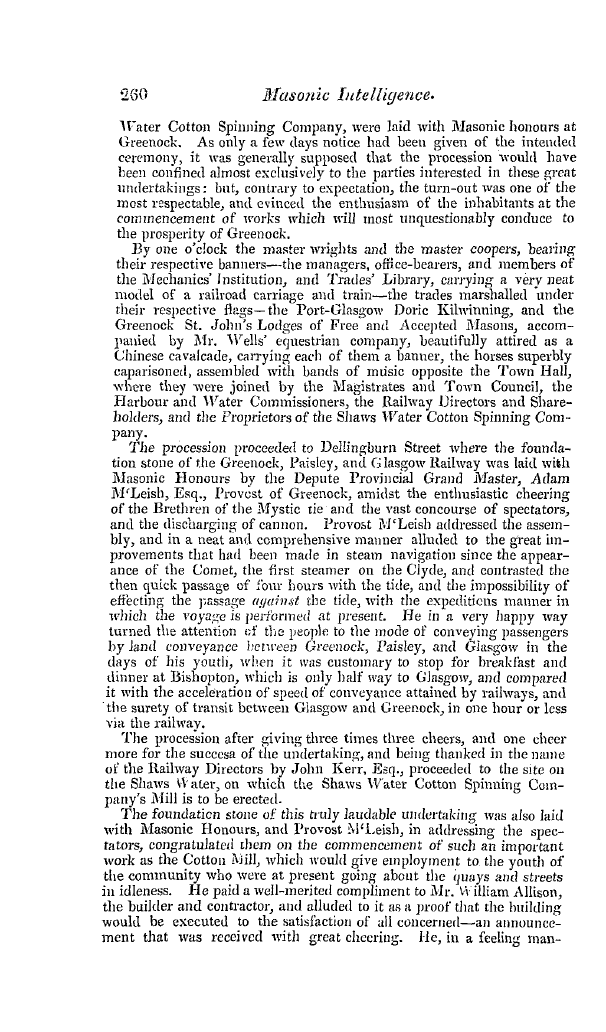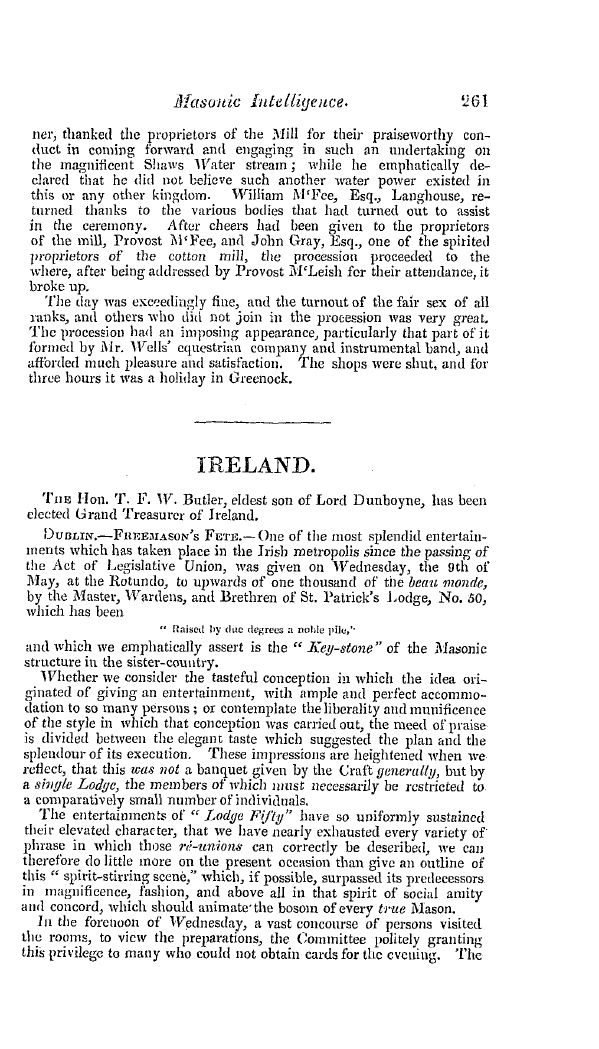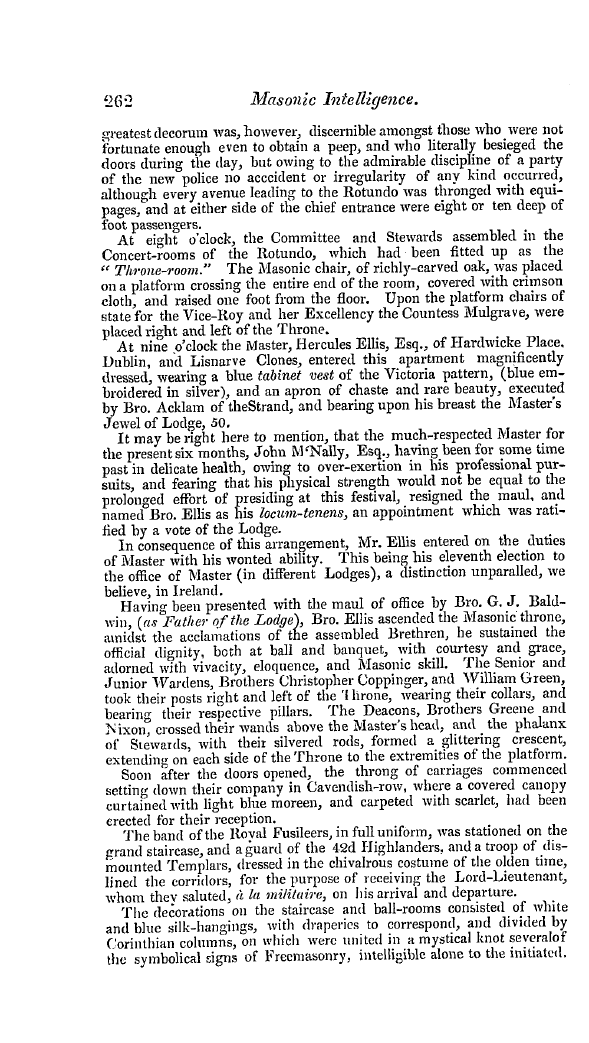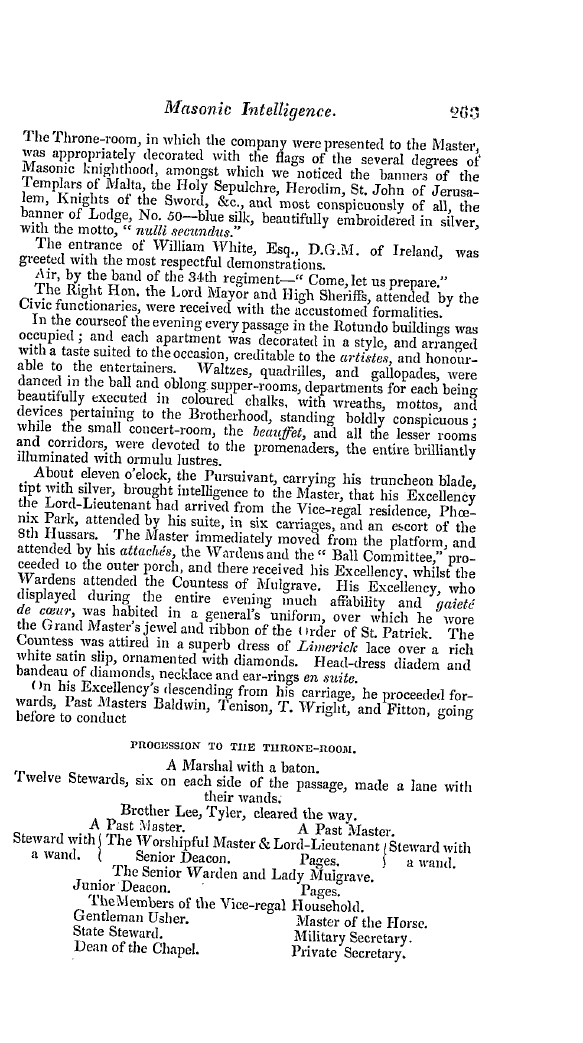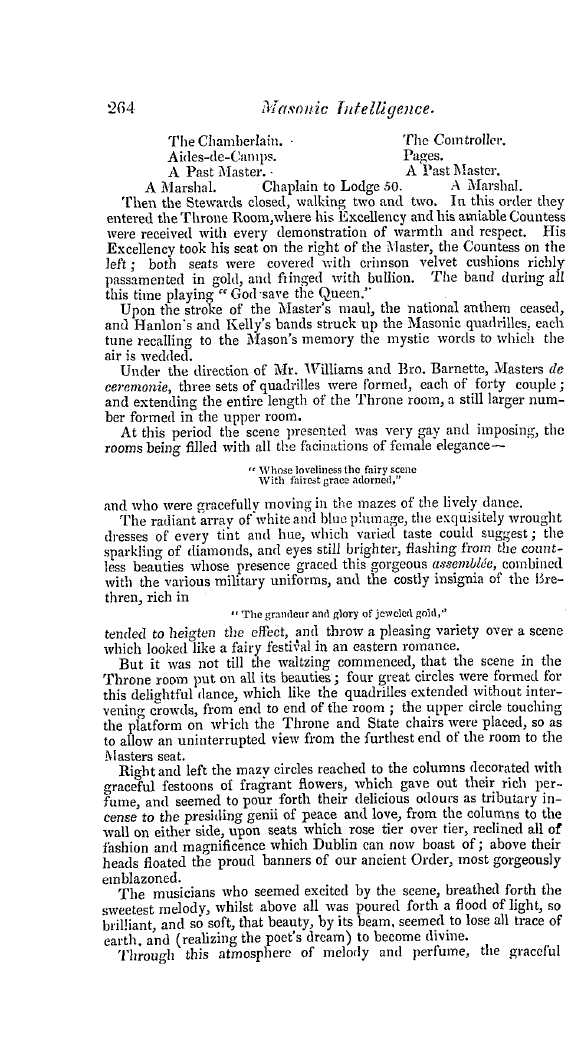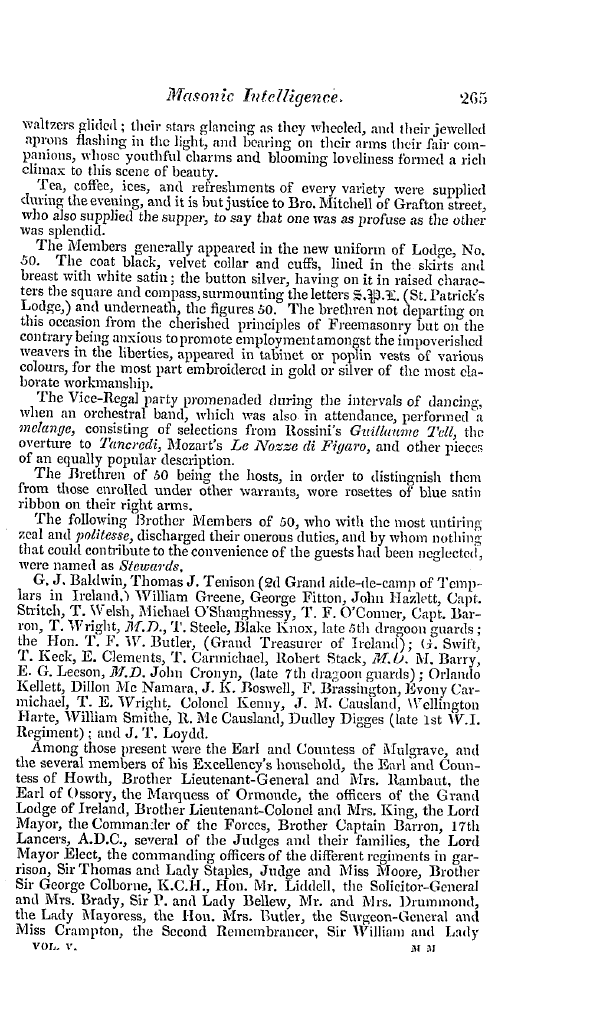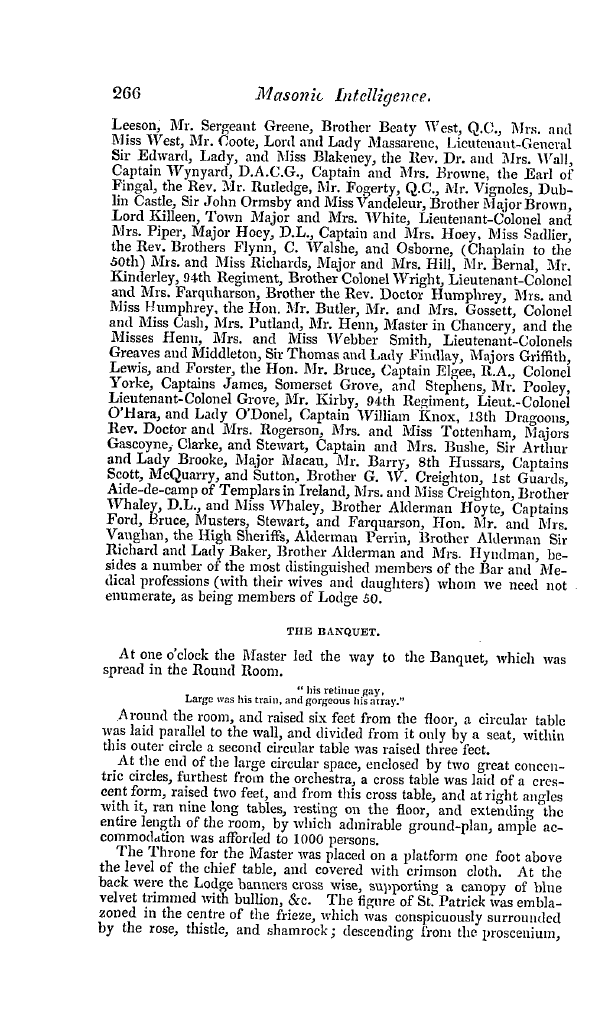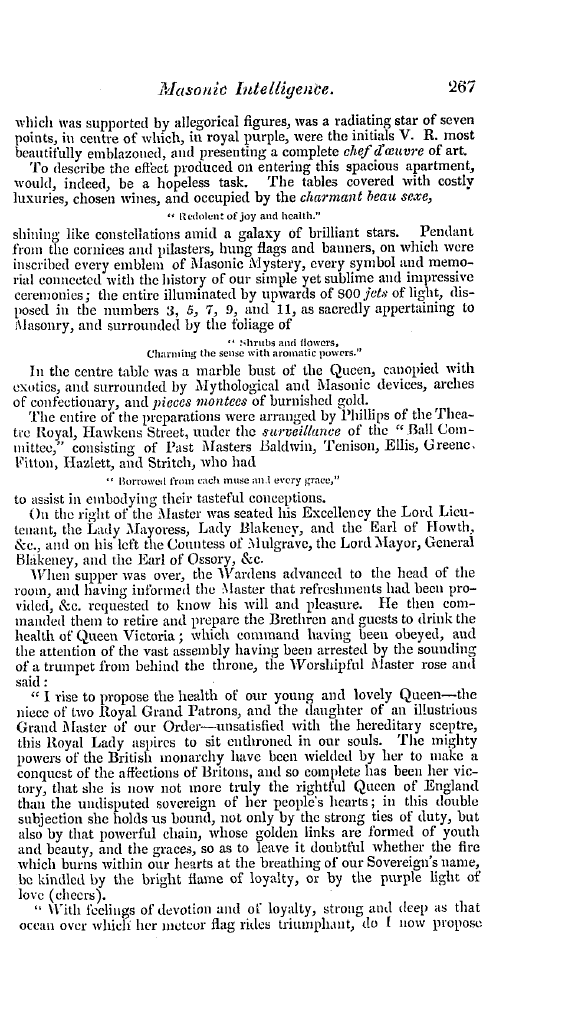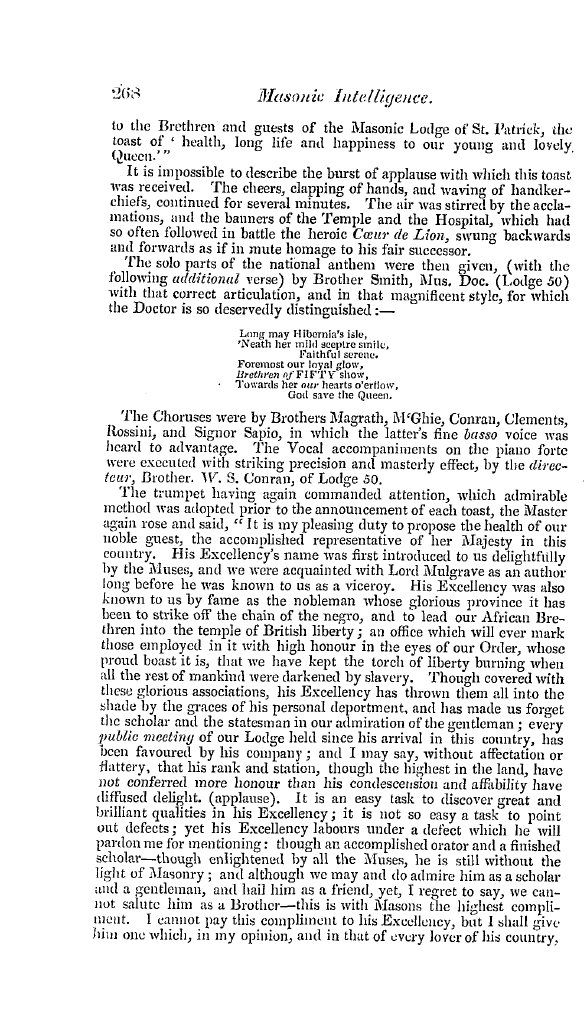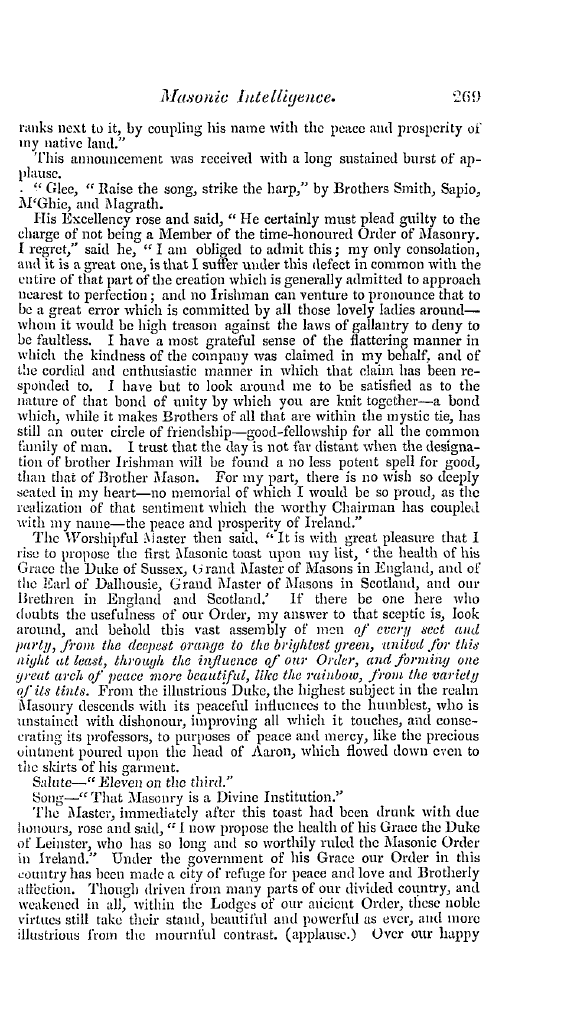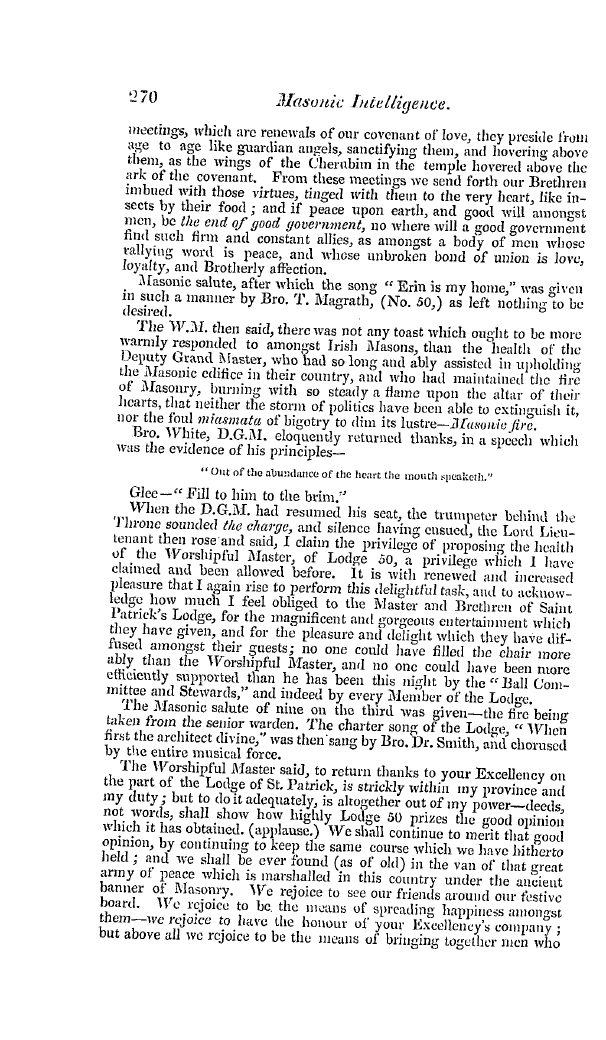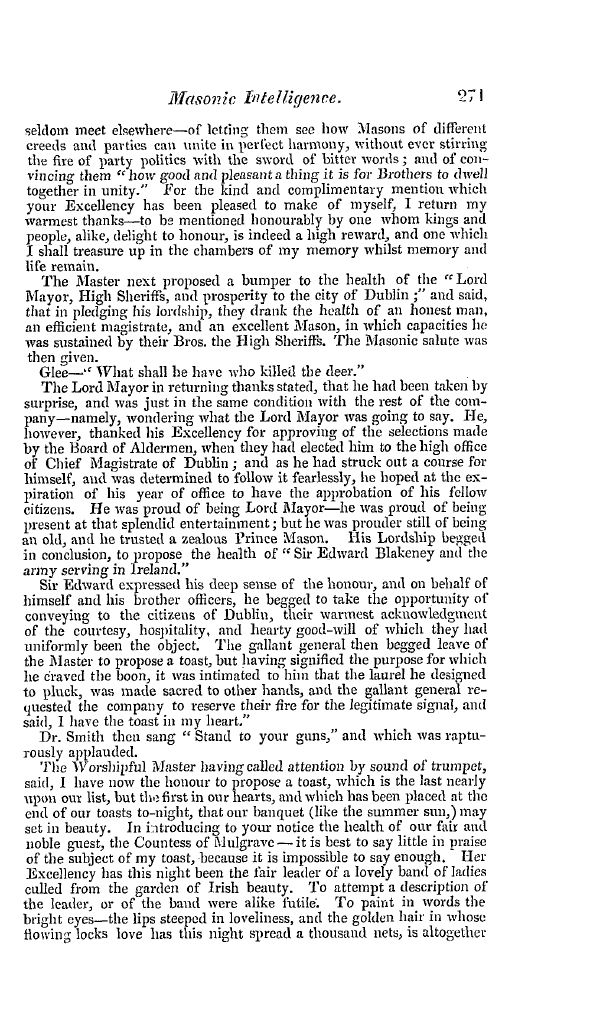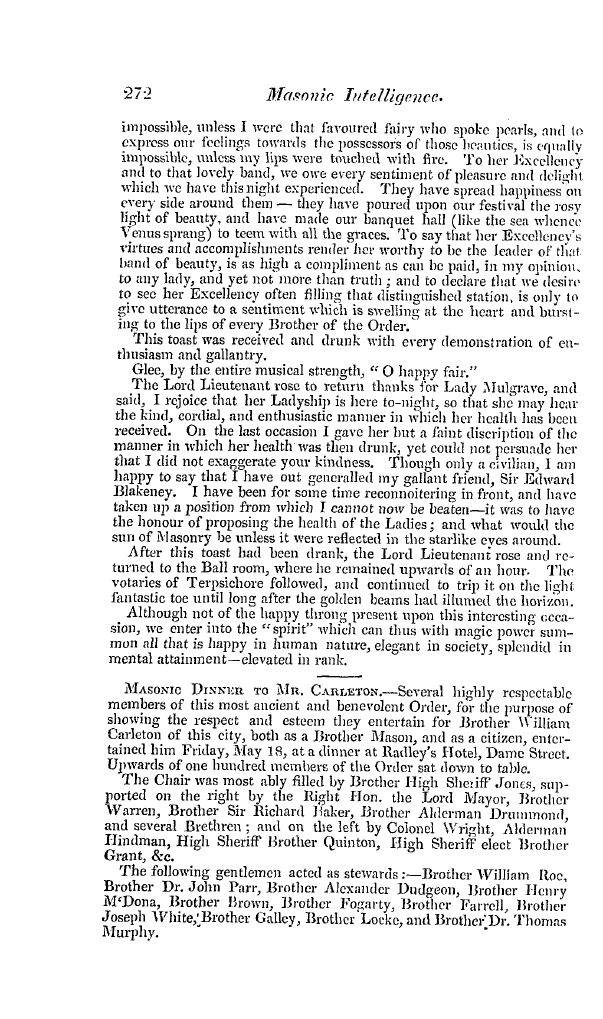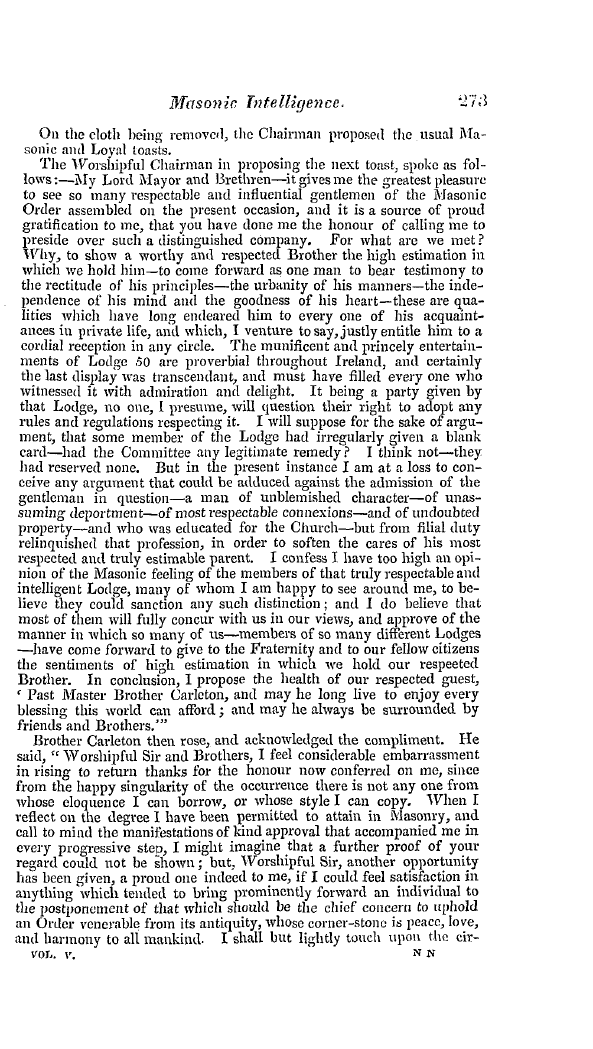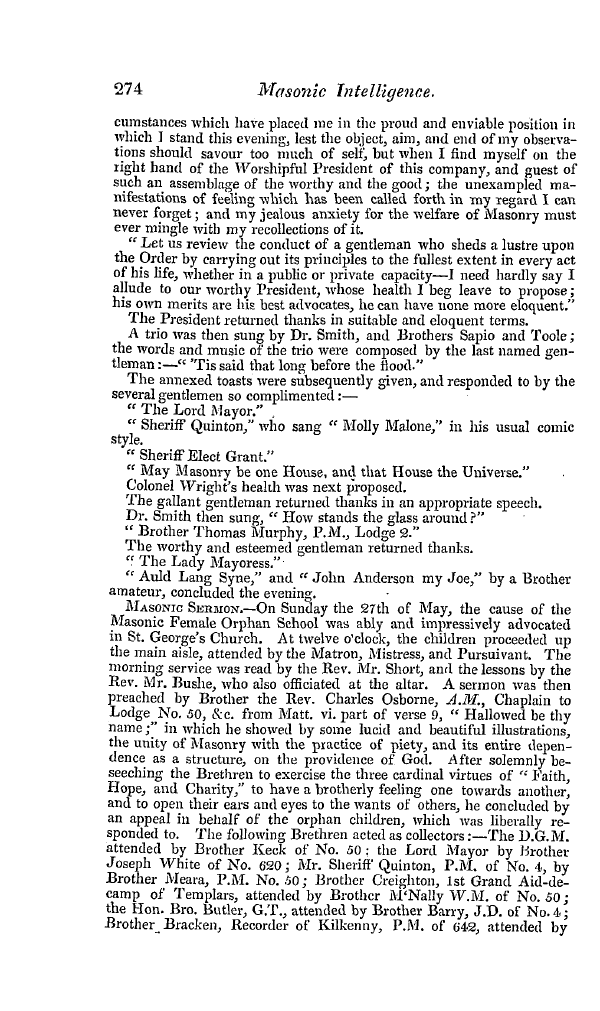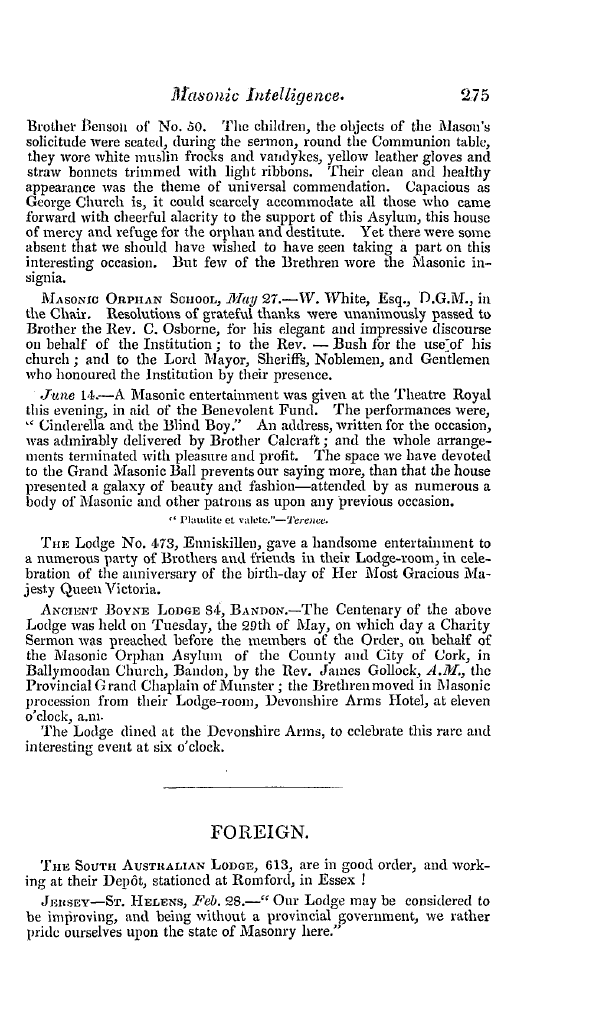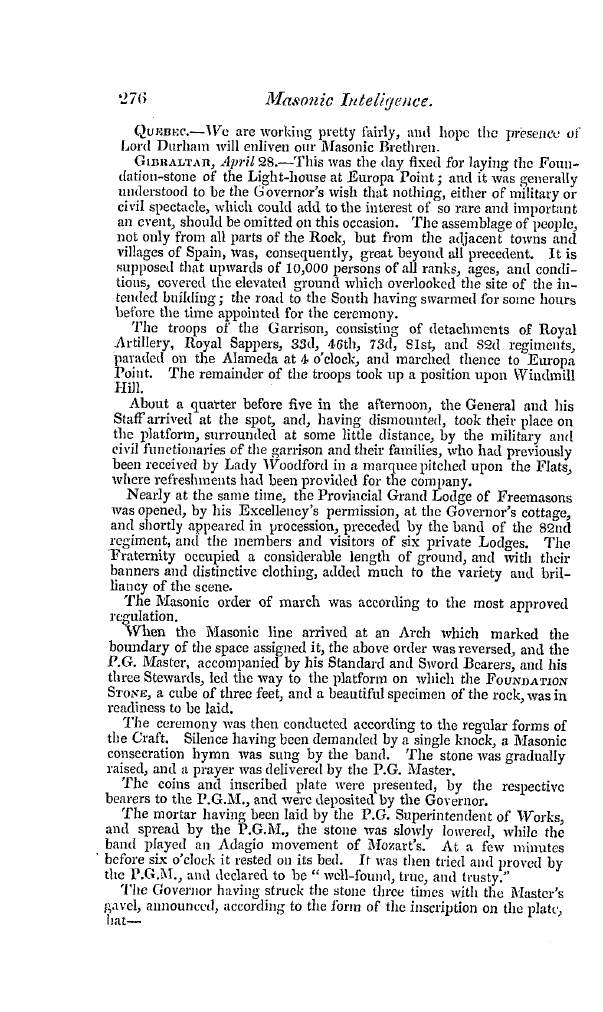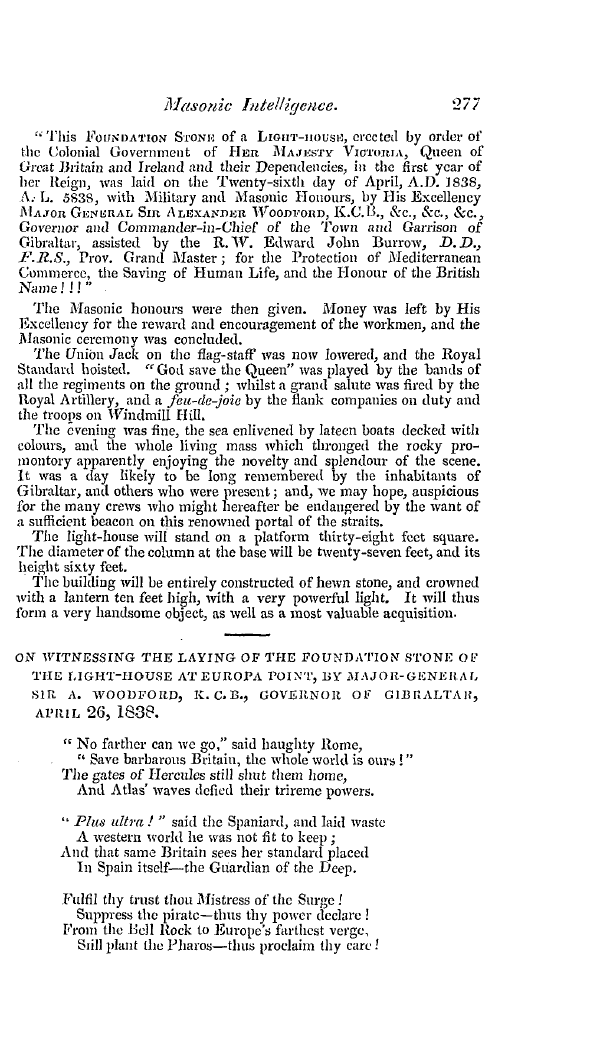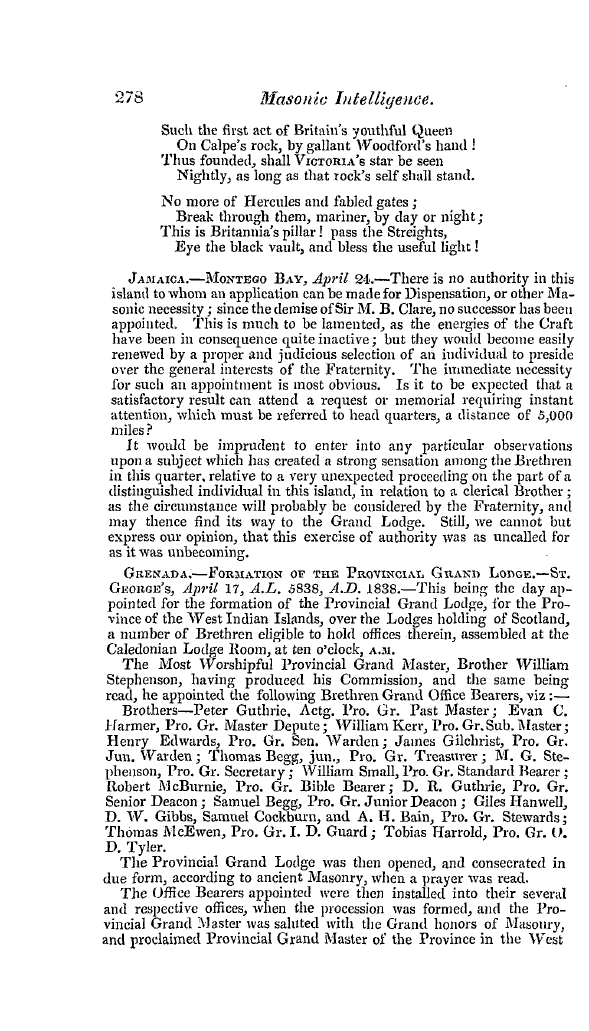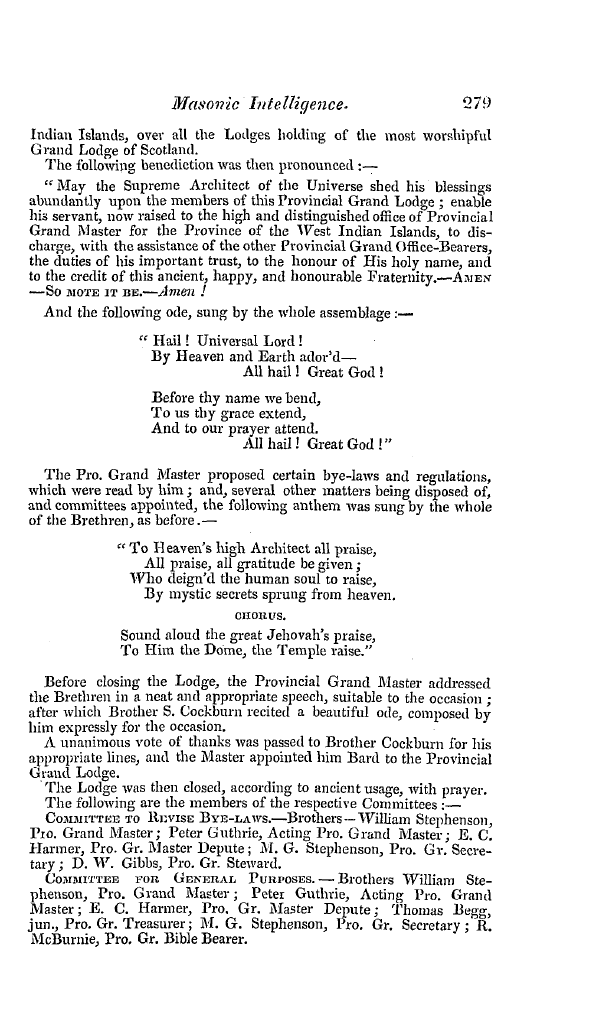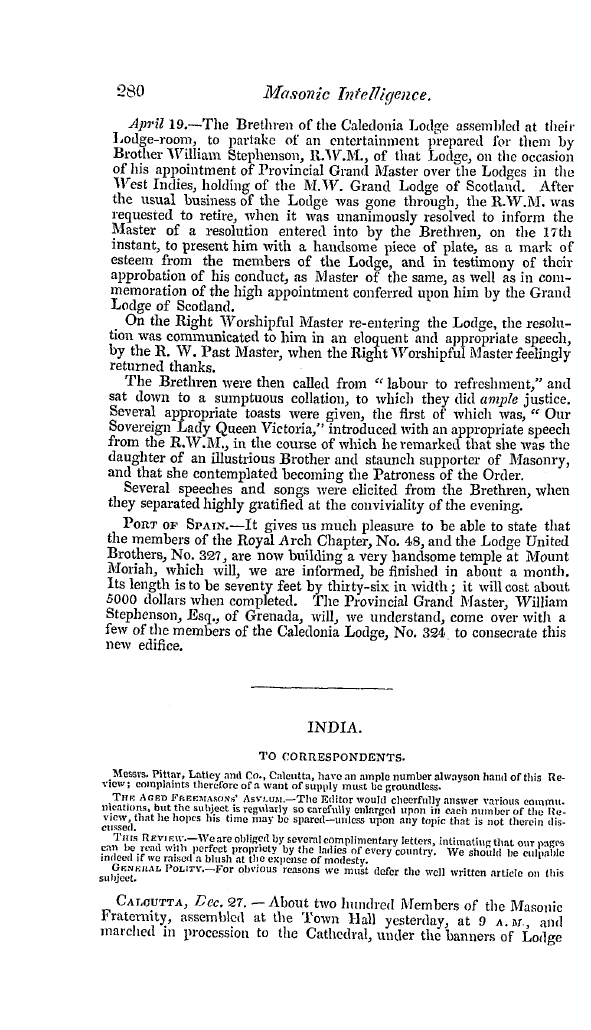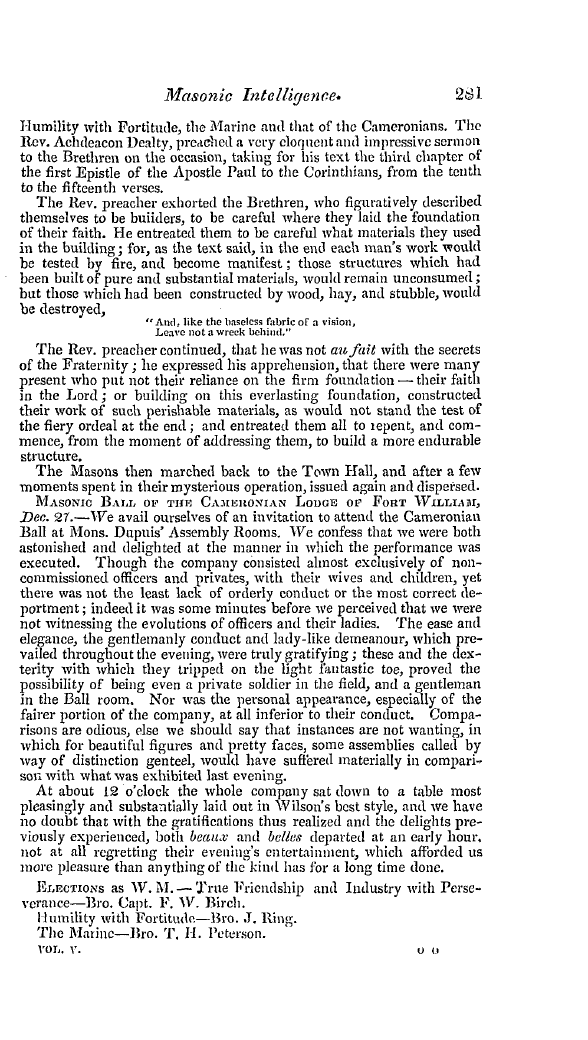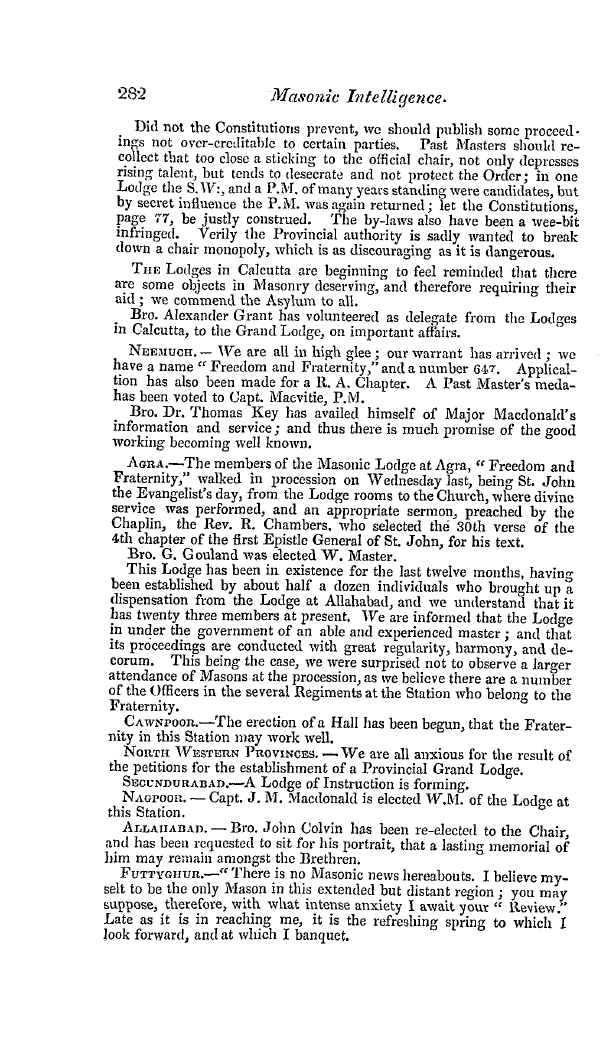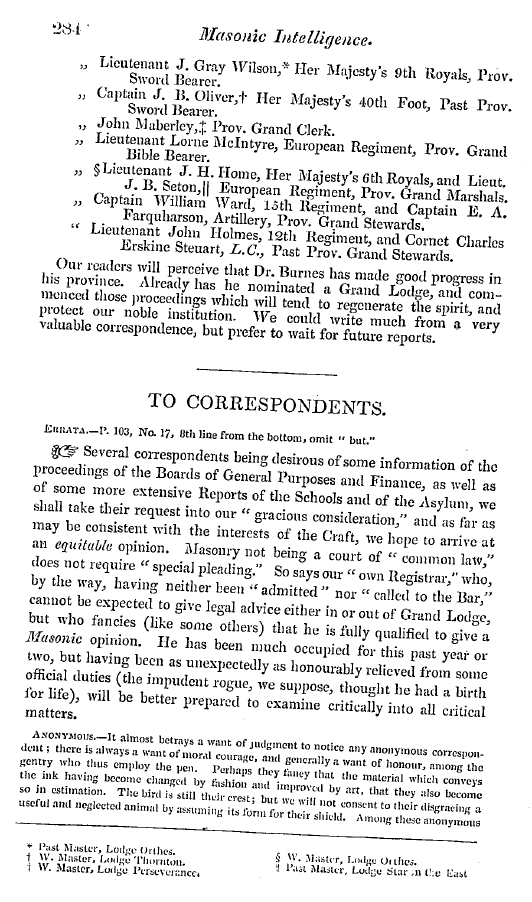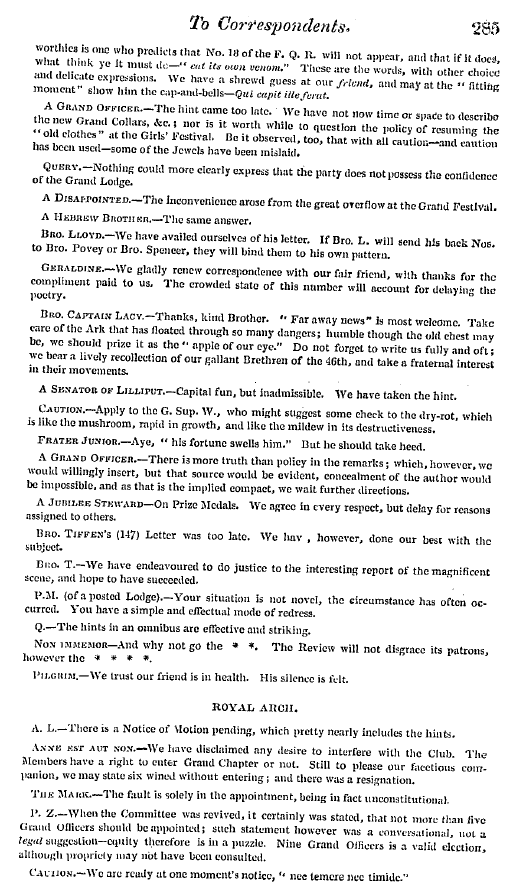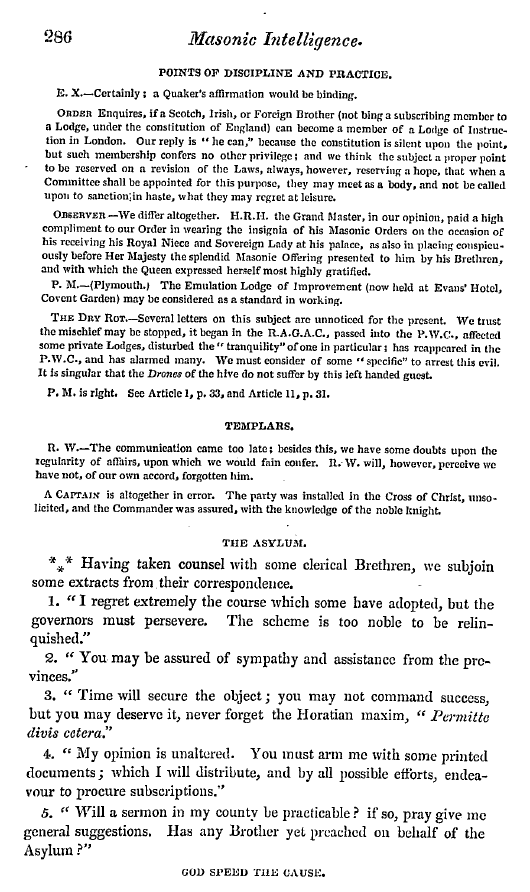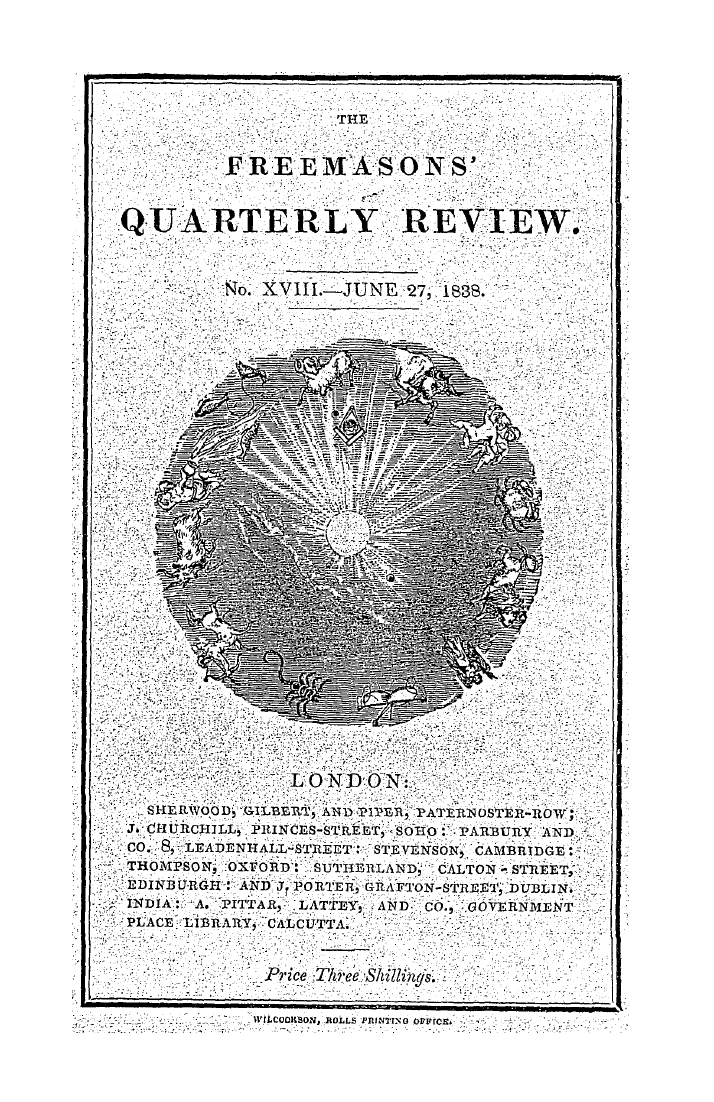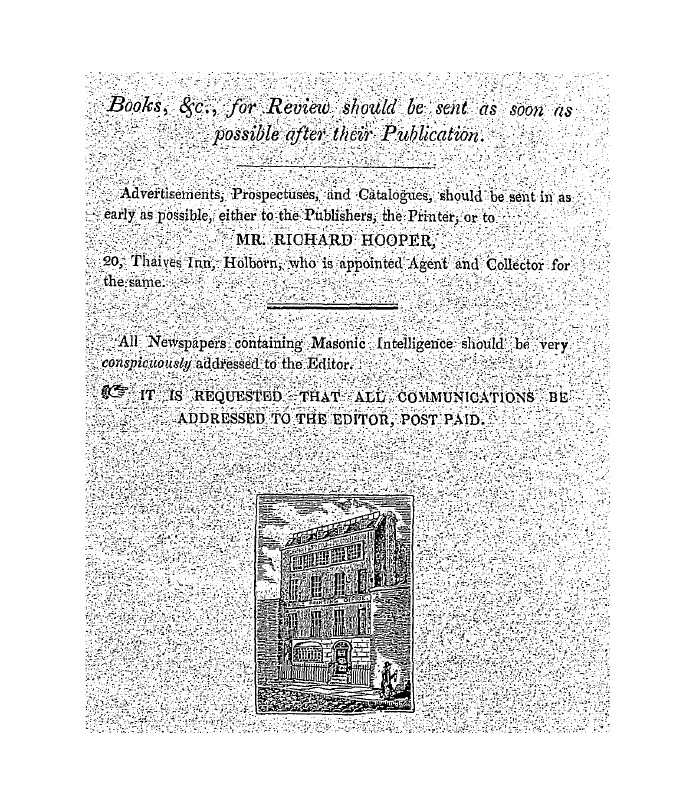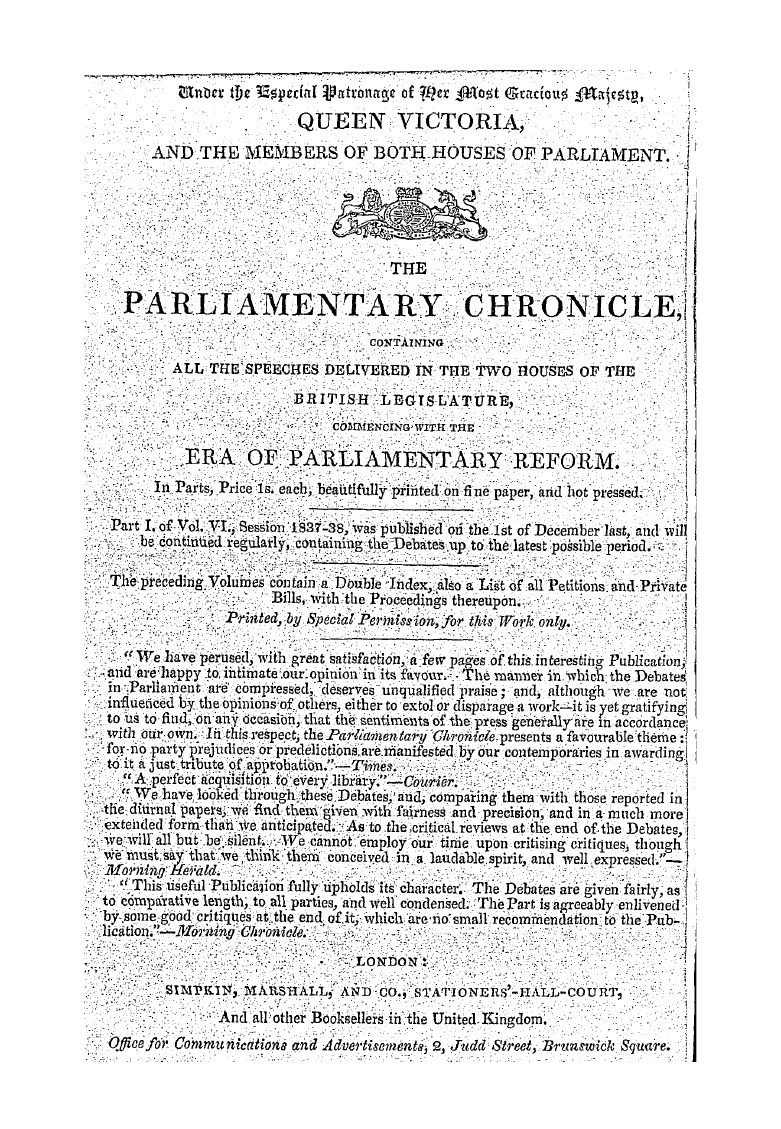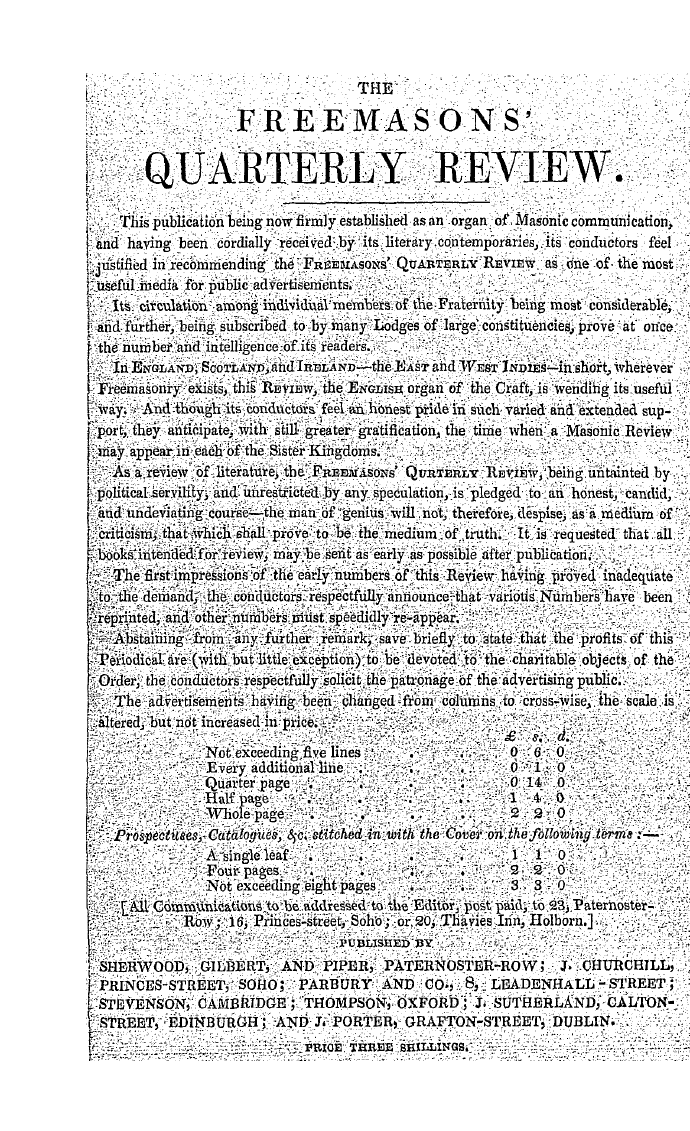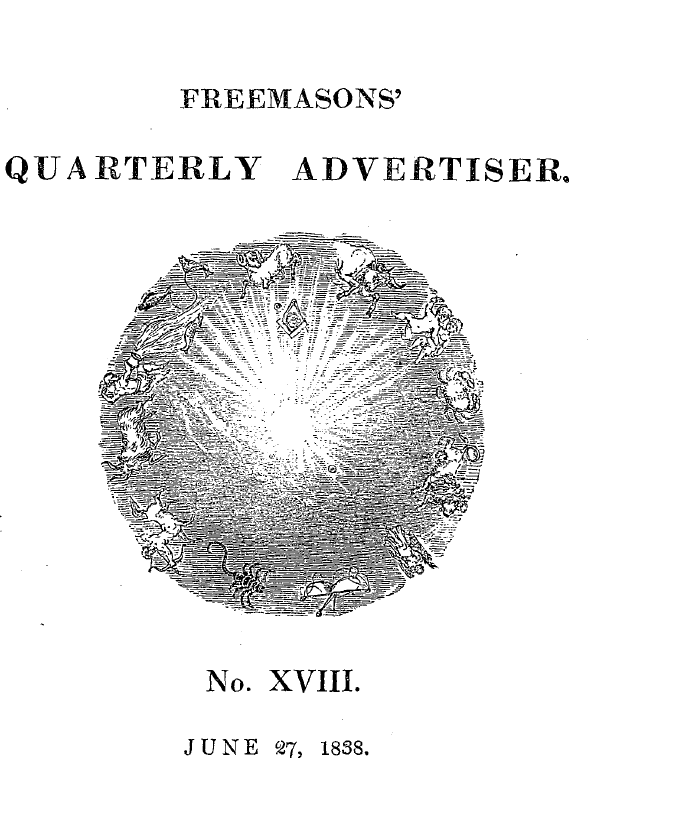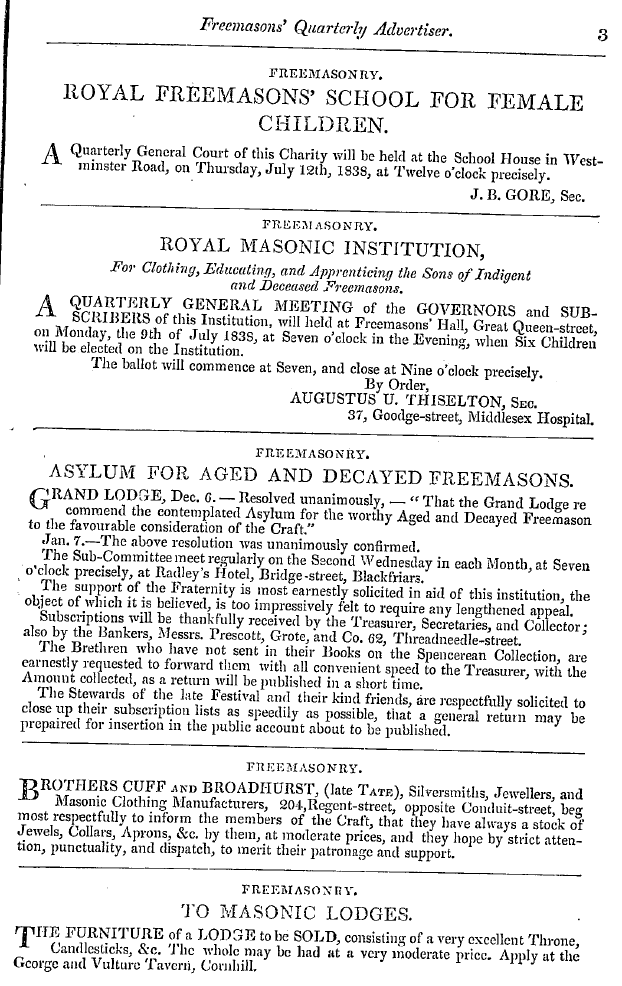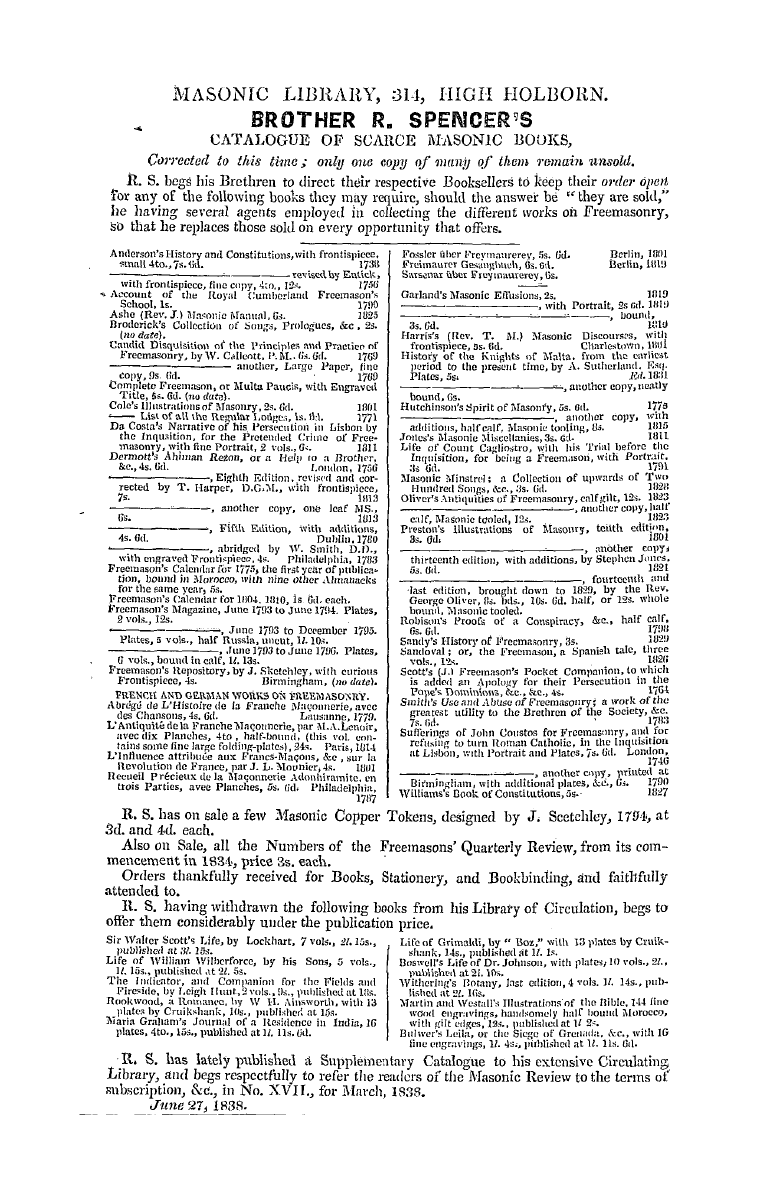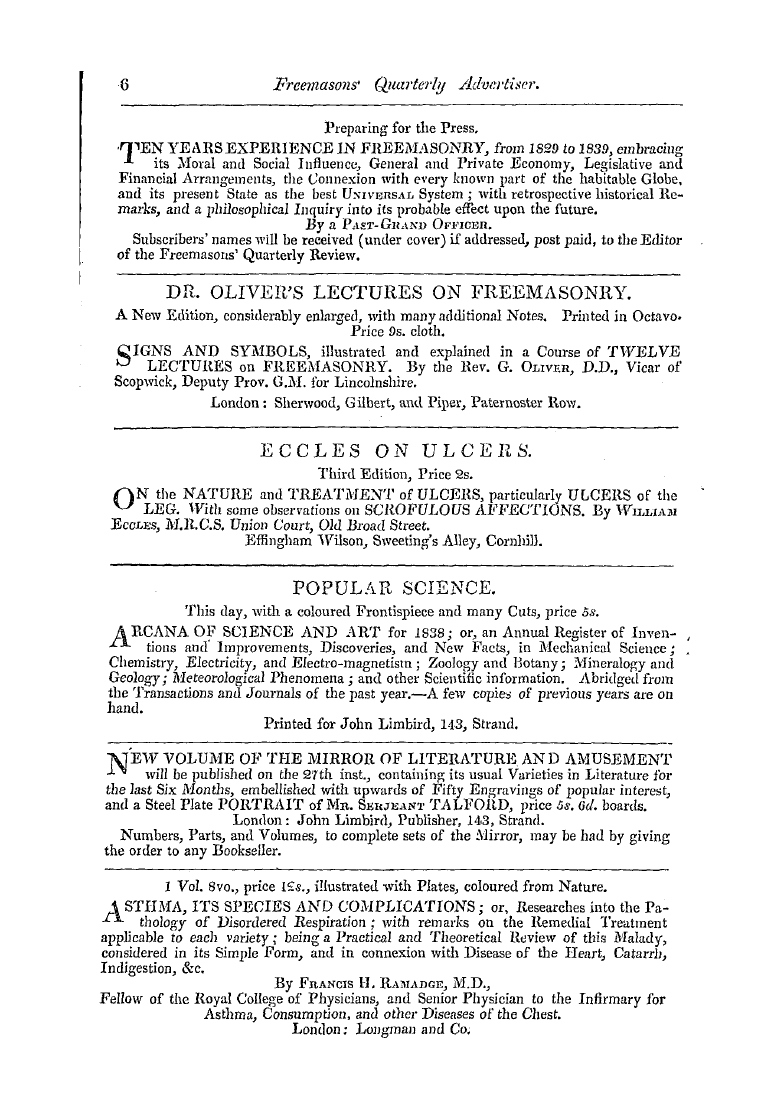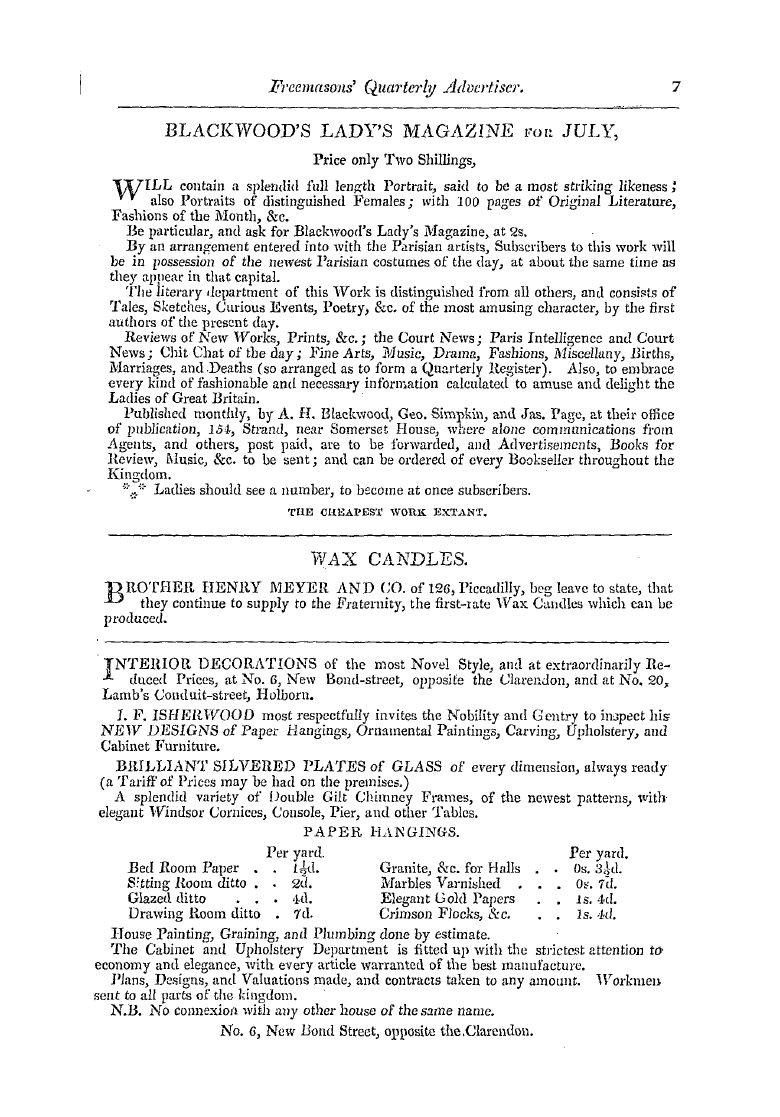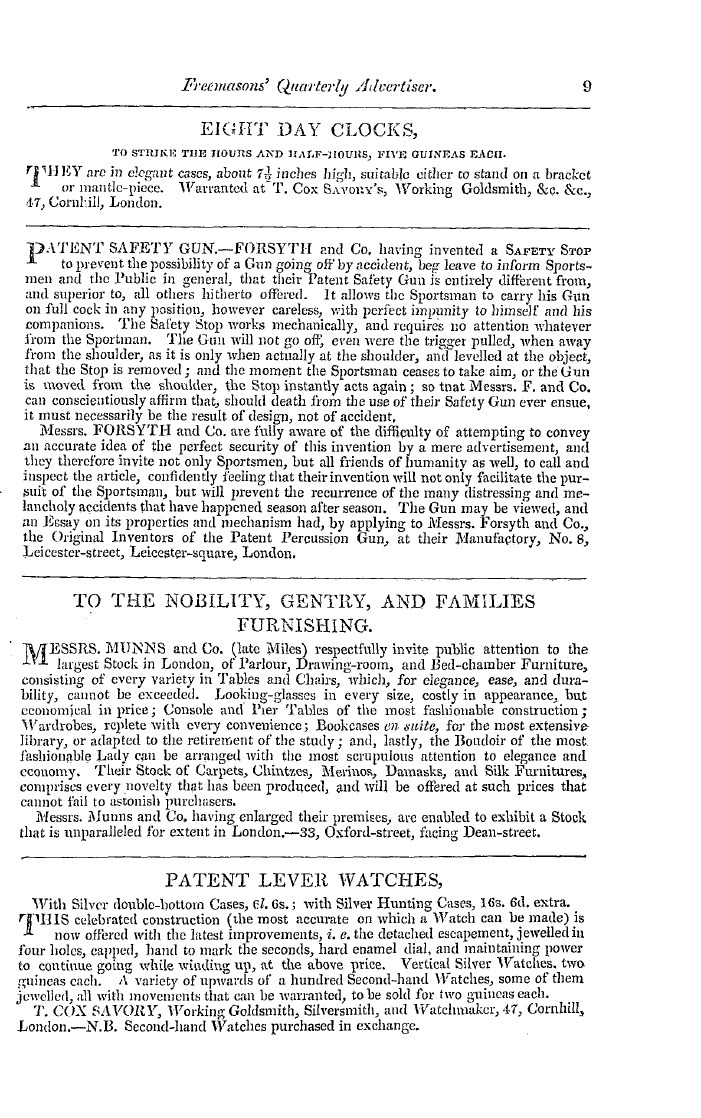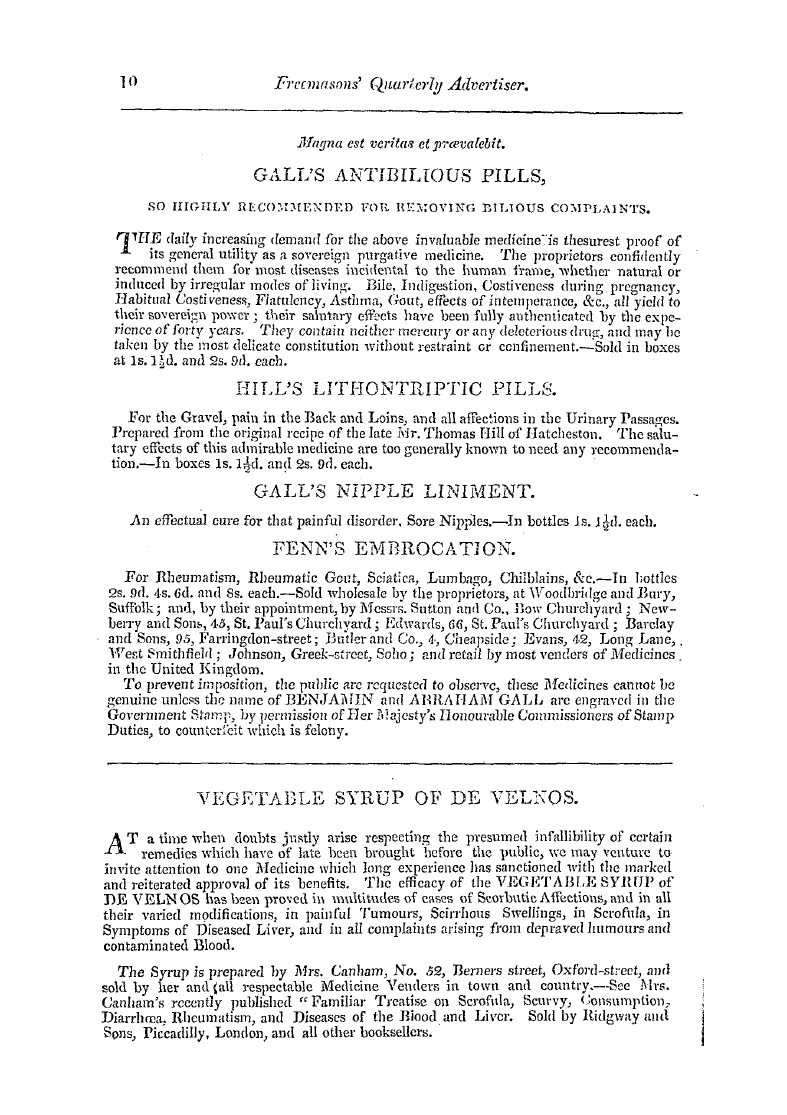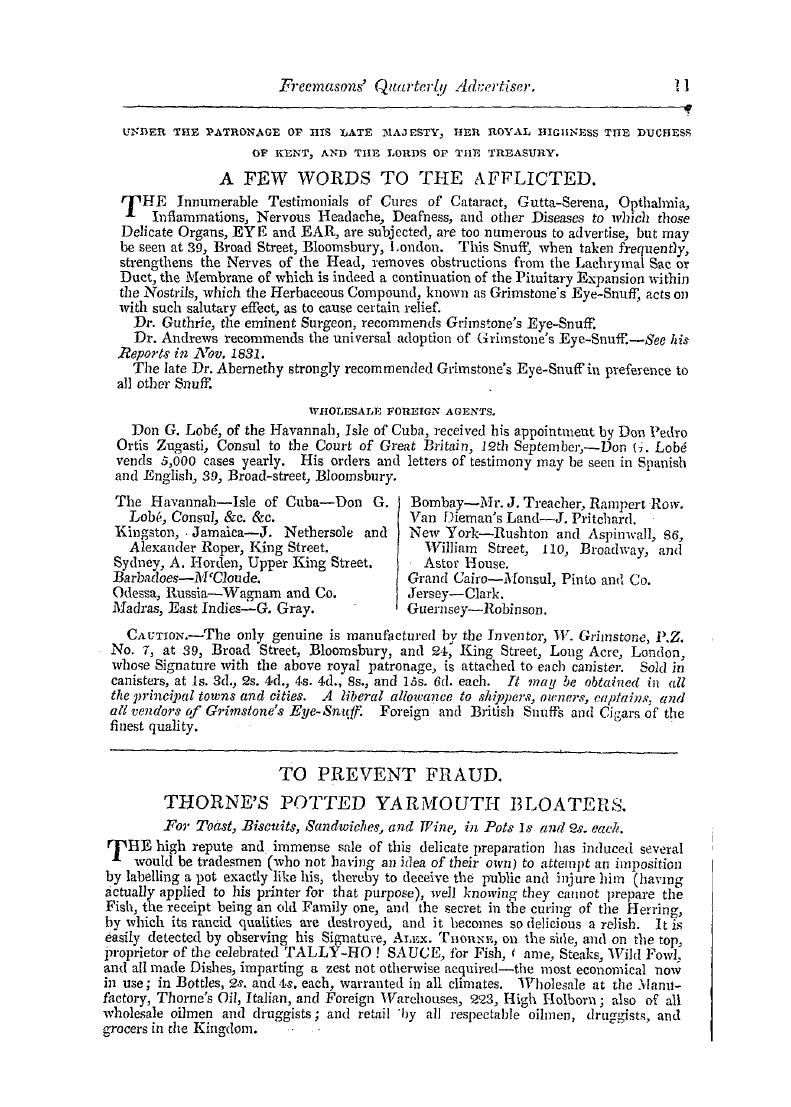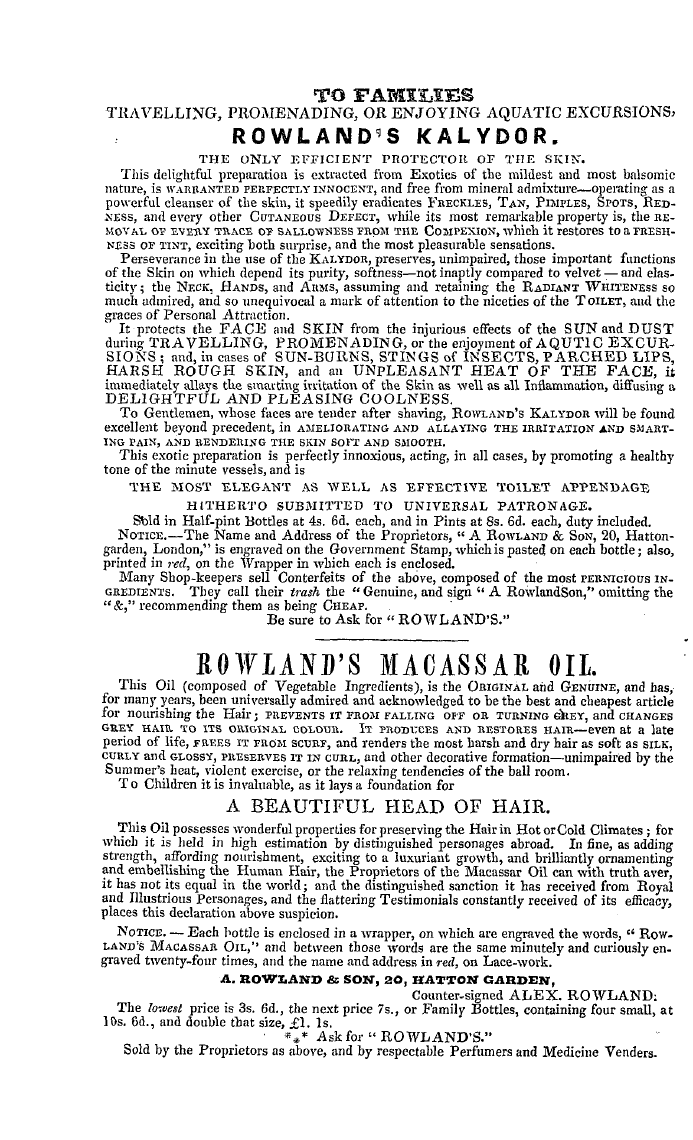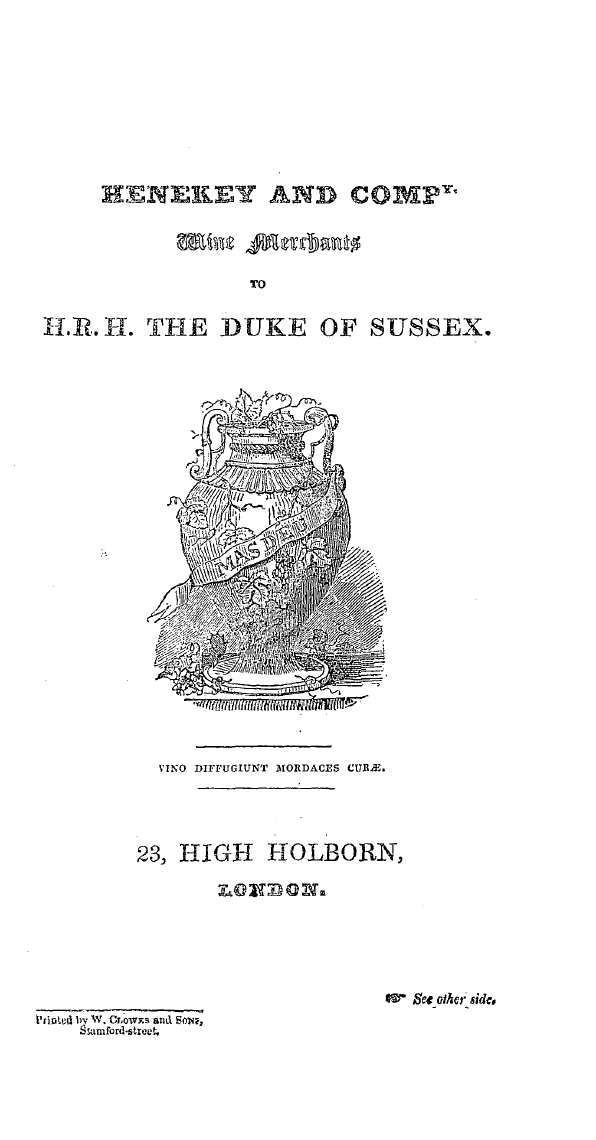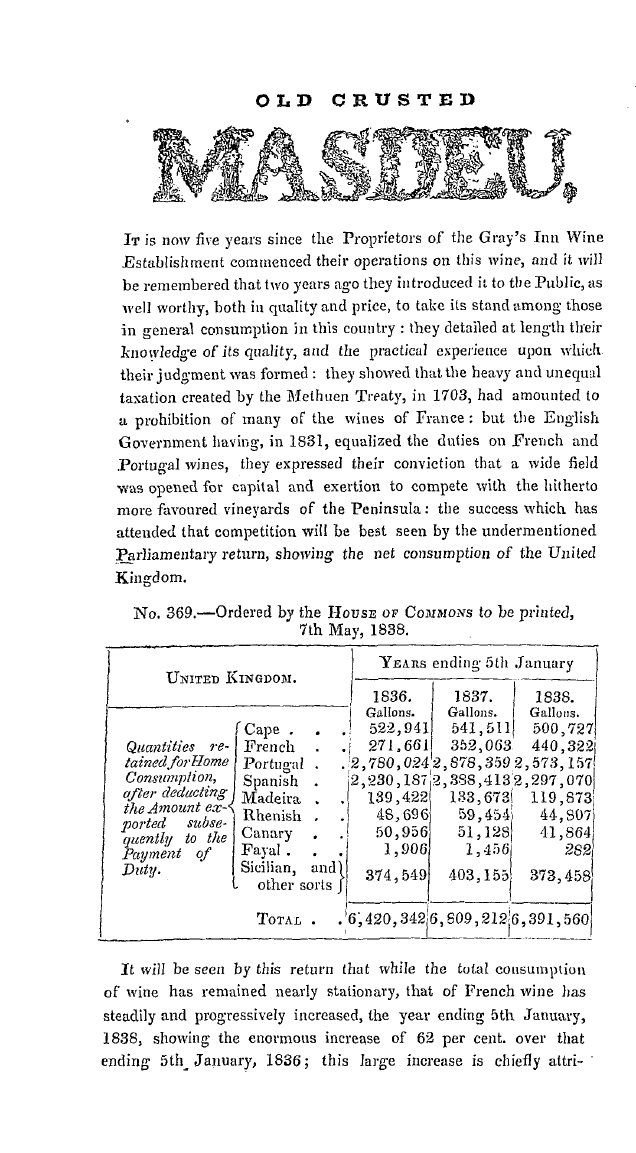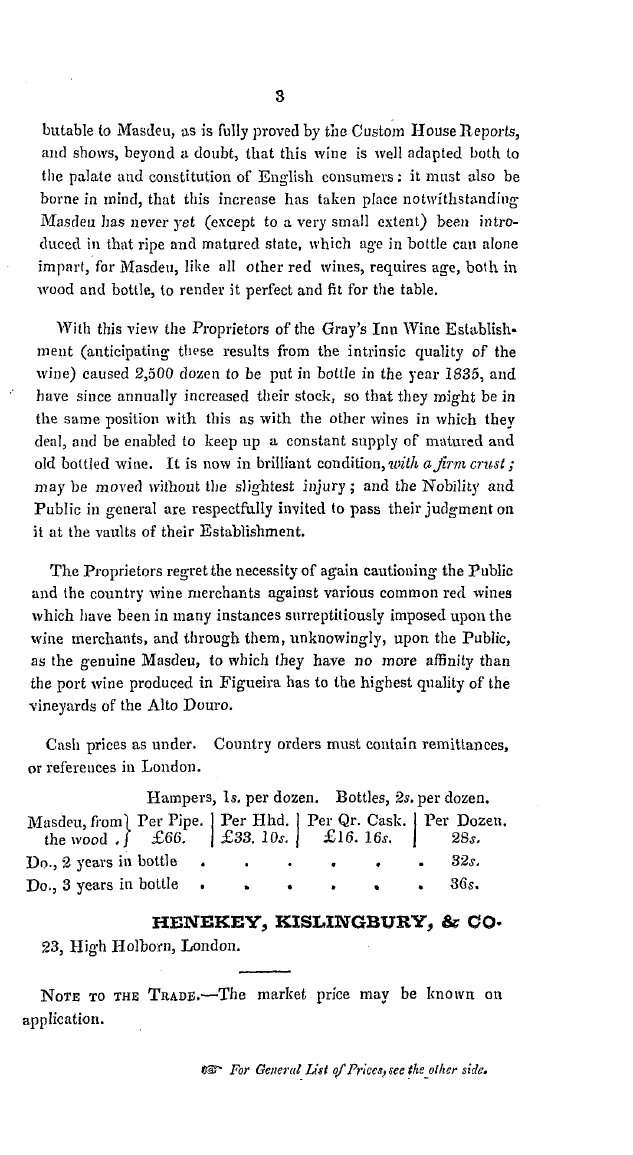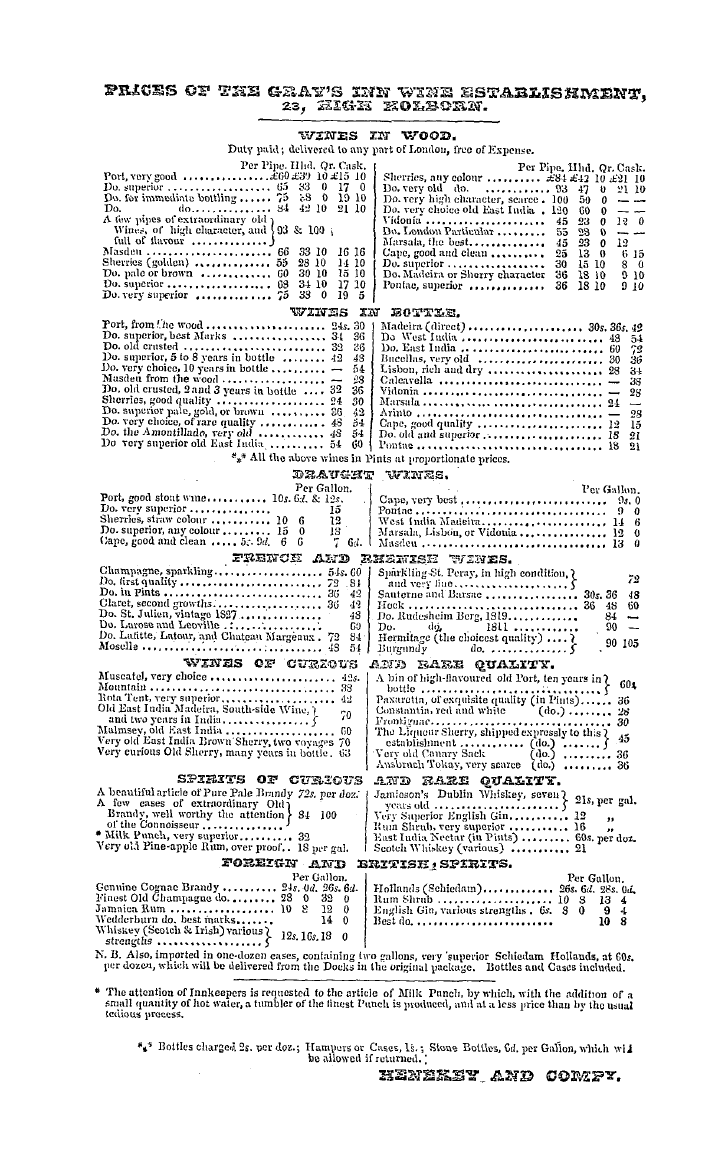-
Articles/Ads
Article NOTITIAE TEMPLARIAE, No. 6. ← Page 3 of 4 →
Note: This text has been automatically extracted via Optical Character Recognition (OCR) software.
Notitiae Templariae, No. 6.
suggested as a simple version of the whole , " Vita . Sacrum Militia ; Templi Hierosolymie . " But the question is still open . In the inside of the Temple church a heap of human bones was some time since accidentally discovered . No memorials of the Knights are apparent among the rustic monuments that crumble around . The old slating has recently been ( sacrilegiously ) removed , to serve some purin the erection of the new church hard b ! It is to be hoped that
pose y the parish heritors will not allow this venerable relic of the Order iu Scotland to go to ruin in consequence . We observed the ancient stone cross , which formerly stood upon the western rmmacle of the edifice , carelessly placed upon one of the pillars of the church-yard gate . Had it not been somewhat ponderous , we should have felt tempted to have transferred the sacred emblem to the Hall of the Canongate Kilwinning Priory , there to be guarded and regarded by the Knights
At no great distance from the above Temple was situated the Preceptory of Balantradochs or Blentodoch , at a place now called Arniston . Mention is made of " Magister et fratres Templi cle Blentodoch " in the chartular of the Abbey of Neivbattle ; and in the inquisitorial process against the Order , instituted at Edinburgh in 1309 , the Grand Preceptor , Walter of Clifton , depones that , among other places , he resided three at Blancradochs ( for so the orthographis varied ) . The
years y fine nieadow grounds and groves of Arniston show that the Knights had there judiciously established themselves . They held also sundry possessions at Corstorphin , Langton , and Kirk-Newton , in the same county . At St . Germains , in East Lothian , there was an establishment of the
Temple , situated in the midst of a fertile district . " Barthelemeii Mestre tie la Maison cle Seint Germain , " swore fealty to Edward I . in 1290 , as his signature in Ragman ' s Roll testifies . The revenues of this Preceptory , which fell to the Hospitallers , were bestowed at the Reformation upon King ' s College , Aberdeen . In the county of Renfrew , the Order possessed a small priory at liichinnan , the parish church of which belonged to them . ' ¦ ' The church
of Inchinnan , " says Chalmers in his Caledonia , " with all its pertinents , was granted to the Knights of the Temple hy David the First , and it continued to belong to them till their suppression in 1312 , when this church , with all their property in Scotland , was transferred to the Knights of St . John , who held it till the Reformation . The Johannites enjoyed the rectorial tithes ancl revenues , ancl the cure was served by a
vicar . At the Reformation the revenues were reported at sixty pounds per annum . The parish church of Inchinnan is a very ancient edifice , said to have been built so far back as 1100 . " The Templars possessed valuable properties in Denny , the Carse of Falkirk , and other parts of the county of Stirling . In the list of relig ious houses annexed to Keith ' s Catalogue of Scotch Bishops , a place called Oggerstone is specified , where the Templars are said to have had
a house ami castle . In the shire of Aberdeen they had churches and lands at Tulloch and Ahoyne . There is a charter of Alexander the Third of Scotland , confirming to the Knights the church of " Obsyne . " In DuinlVicshii-e , the Order possessed the chapelry of Dinwoodie , with the adjacent lands , in the parish of Applegarth , besides a vast number of small and detached properties . In l 2 !) G the Master of the Temple having submitted to Edward the First , he was rewarded by a
Note: This text has been automatically extracted via Optical Character Recognition (OCR) software.
Notitiae Templariae, No. 6.
suggested as a simple version of the whole , " Vita . Sacrum Militia ; Templi Hierosolymie . " But the question is still open . In the inside of the Temple church a heap of human bones was some time since accidentally discovered . No memorials of the Knights are apparent among the rustic monuments that crumble around . The old slating has recently been ( sacrilegiously ) removed , to serve some purin the erection of the new church hard b ! It is to be hoped that
pose y the parish heritors will not allow this venerable relic of the Order iu Scotland to go to ruin in consequence . We observed the ancient stone cross , which formerly stood upon the western rmmacle of the edifice , carelessly placed upon one of the pillars of the church-yard gate . Had it not been somewhat ponderous , we should have felt tempted to have transferred the sacred emblem to the Hall of the Canongate Kilwinning Priory , there to be guarded and regarded by the Knights
At no great distance from the above Temple was situated the Preceptory of Balantradochs or Blentodoch , at a place now called Arniston . Mention is made of " Magister et fratres Templi cle Blentodoch " in the chartular of the Abbey of Neivbattle ; and in the inquisitorial process against the Order , instituted at Edinburgh in 1309 , the Grand Preceptor , Walter of Clifton , depones that , among other places , he resided three at Blancradochs ( for so the orthographis varied ) . The
years y fine nieadow grounds and groves of Arniston show that the Knights had there judiciously established themselves . They held also sundry possessions at Corstorphin , Langton , and Kirk-Newton , in the same county . At St . Germains , in East Lothian , there was an establishment of the
Temple , situated in the midst of a fertile district . " Barthelemeii Mestre tie la Maison cle Seint Germain , " swore fealty to Edward I . in 1290 , as his signature in Ragman ' s Roll testifies . The revenues of this Preceptory , which fell to the Hospitallers , were bestowed at the Reformation upon King ' s College , Aberdeen . In the county of Renfrew , the Order possessed a small priory at liichinnan , the parish church of which belonged to them . ' ¦ ' The church
of Inchinnan , " says Chalmers in his Caledonia , " with all its pertinents , was granted to the Knights of the Temple hy David the First , and it continued to belong to them till their suppression in 1312 , when this church , with all their property in Scotland , was transferred to the Knights of St . John , who held it till the Reformation . The Johannites enjoyed the rectorial tithes ancl revenues , ancl the cure was served by a
vicar . At the Reformation the revenues were reported at sixty pounds per annum . The parish church of Inchinnan is a very ancient edifice , said to have been built so far back as 1100 . " The Templars possessed valuable properties in Denny , the Carse of Falkirk , and other parts of the county of Stirling . In the list of relig ious houses annexed to Keith ' s Catalogue of Scotch Bishops , a place called Oggerstone is specified , where the Templars are said to have had
a house ami castle . In the shire of Aberdeen they had churches and lands at Tulloch and Ahoyne . There is a charter of Alexander the Third of Scotland , confirming to the Knights the church of " Obsyne . " In DuinlVicshii-e , the Order possessed the chapelry of Dinwoodie , with the adjacent lands , in the parish of Applegarth , besides a vast number of small and detached properties . In l 2 !) G the Master of the Temple having submitted to Edward the First , he was rewarded by a































































